Prior to this trip, you could fit my knowledge of the Civil War into a snack-size Ziplock bag. Blame the really cute boy Adam who sat in front of me in high school History class — for an entire semester, I was too busy doodling MY first name — with HIS last name — to pay much attention to the curriculum.
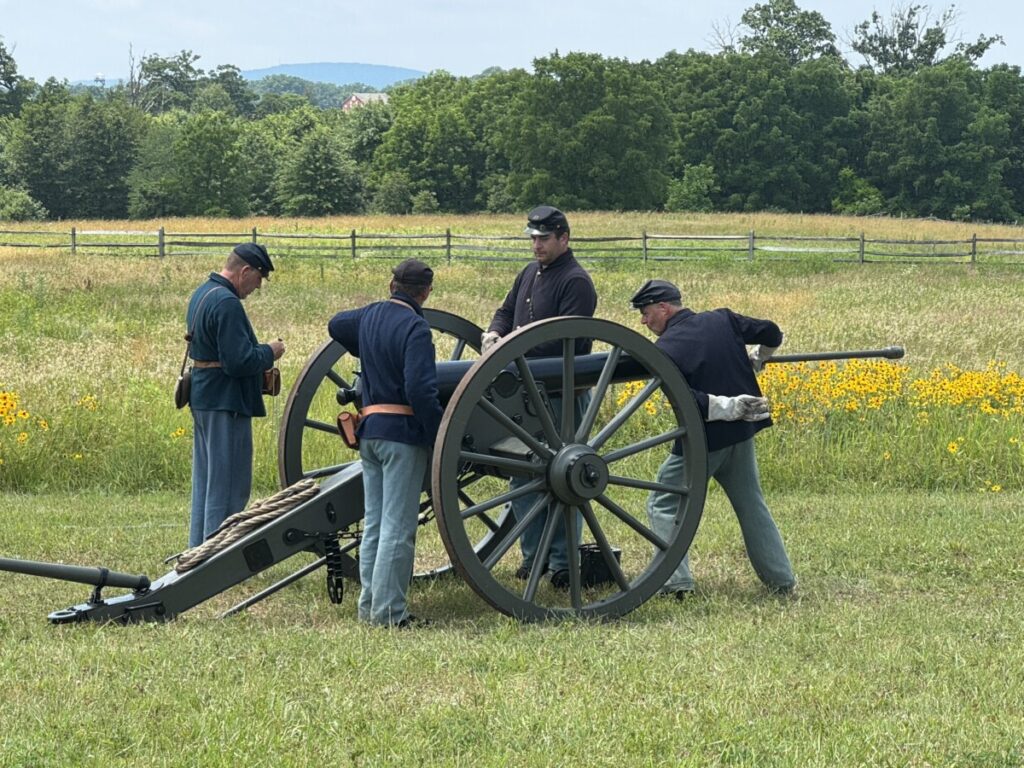
With our visits to Gettysburg PA, Antietam MD, and Harpers Ferry MD, however, when paired with a generous helping of Ken Burns’ fabulous 9-part documentary series about the Civil War, my knowledge has now skyrocketed to fill a sandwich-sized Ziplock bag. The Cliff Notes version of the overall conflict: Americans fought each other over three things: the survival of the Union, the fate of slavery, and the common rights of citizenship.

Gettysburg
The most pivotal battle of the American Civil War (July 1-3, 1863)
With more than 50,000 casualties, the three-day battle at Gettysburg, PA was the deadliest single battle of the war. In short, Gettysburg dashed General Robert E. Lee’s hopes and dreams for the Confederate States of America to become their very own nation, and elevated Abraham Lincoln to public-speaking immortality with his Gettysburg address, and was the turning point that literally determined the future of the United States.


One of the most popular battlesites, its most recognizable locations like Little Round Top, Picketts Charge, Devils Den, and more are easily accessible on a 24-mile touring route. You can pull off at any time to listen to the excellent National Park Service audio tour narration, or to get out and walk around as you like.


Gettysburg has 1,328 monuments, from tiny to enormous, commemorating various events and war heroes and companies and troop movements. Toss in over 400 cannons and 147 historic buildings in various stages of restoration, and there’s lots of meaningful stuff to see here.

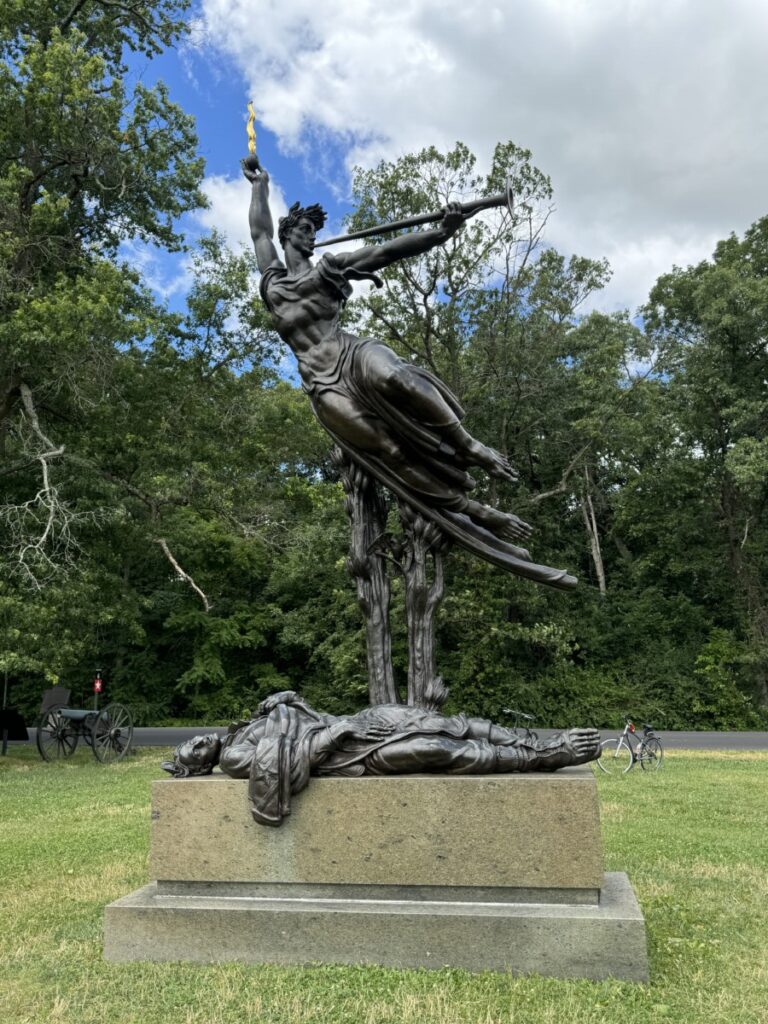
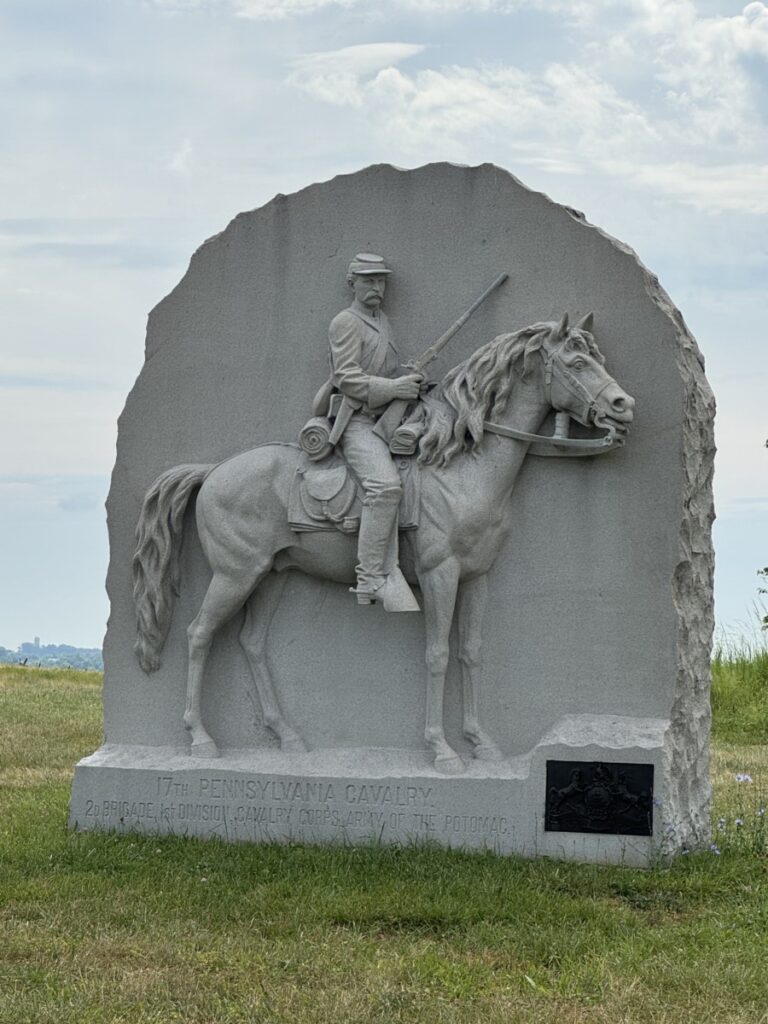
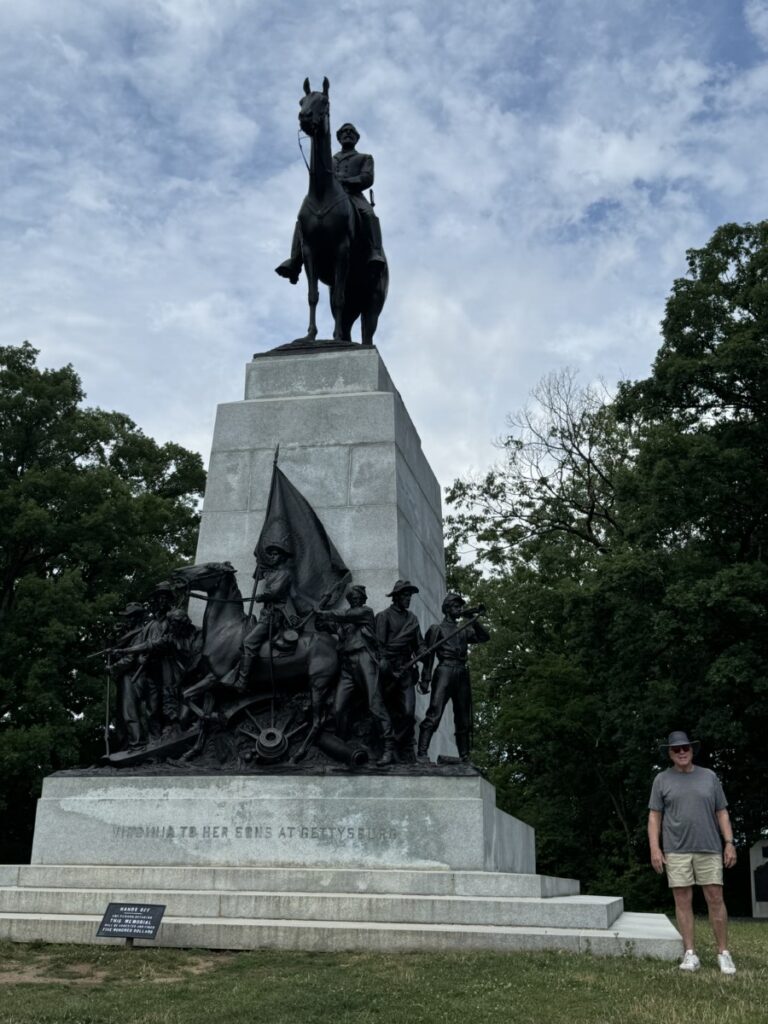
Hiring a reasonably-priced private guide, taking a van or bus tour, or riding a bike/Segway/go-ped car/horse-drawn carriage, are all great options for bringing the Gettysburg battleground to life during your visit. Though there is traffic, everyone is moving slowly and gawking, so it’s reasonably safe to ride.

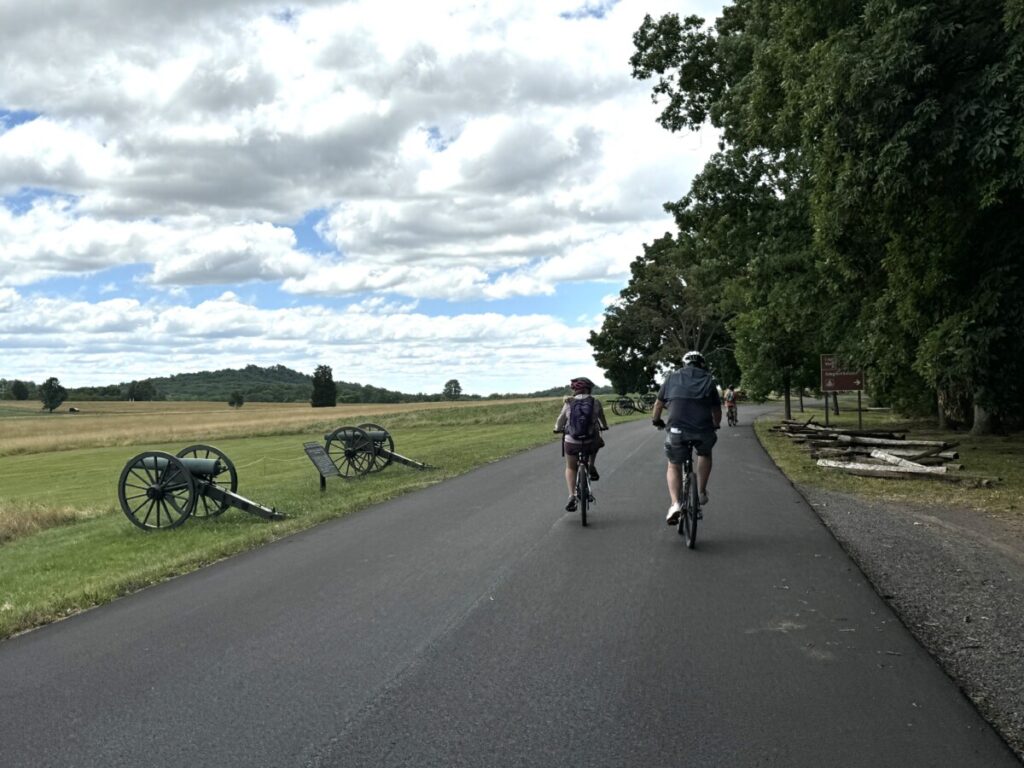
The views of the expansive Pennsylvania countryside belie the carnage that occurred here. Many of the monuments and viewing towers also allow you to climb up-up-up to survey the battlefields in ways that the generals probably could not at the time.
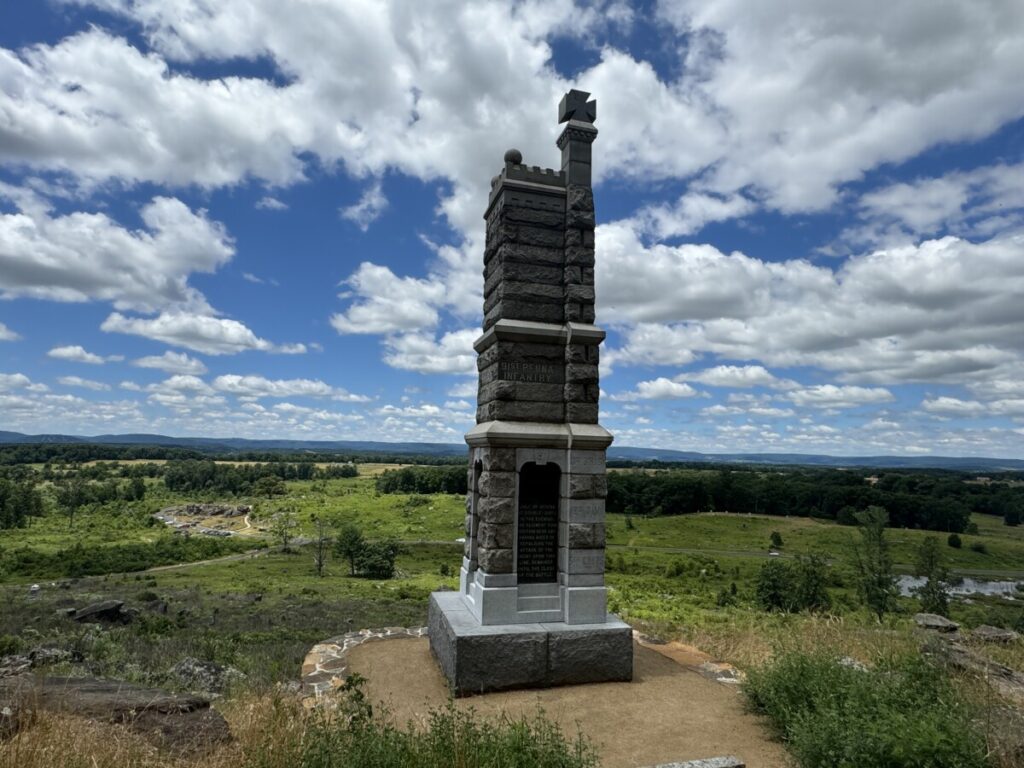
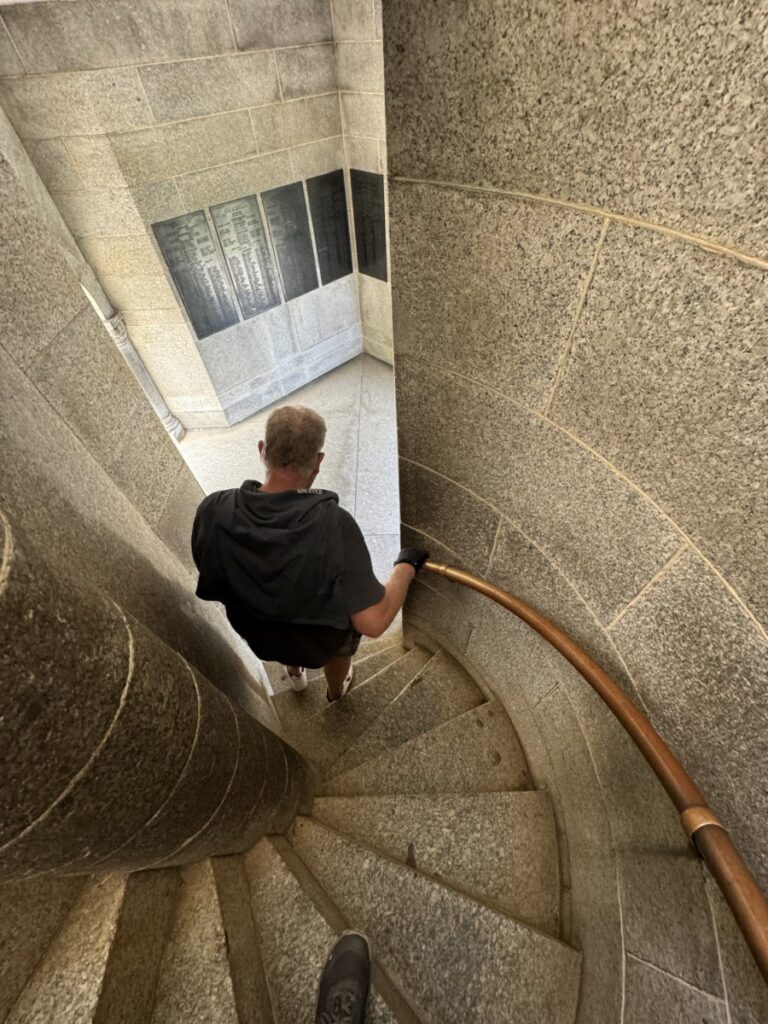

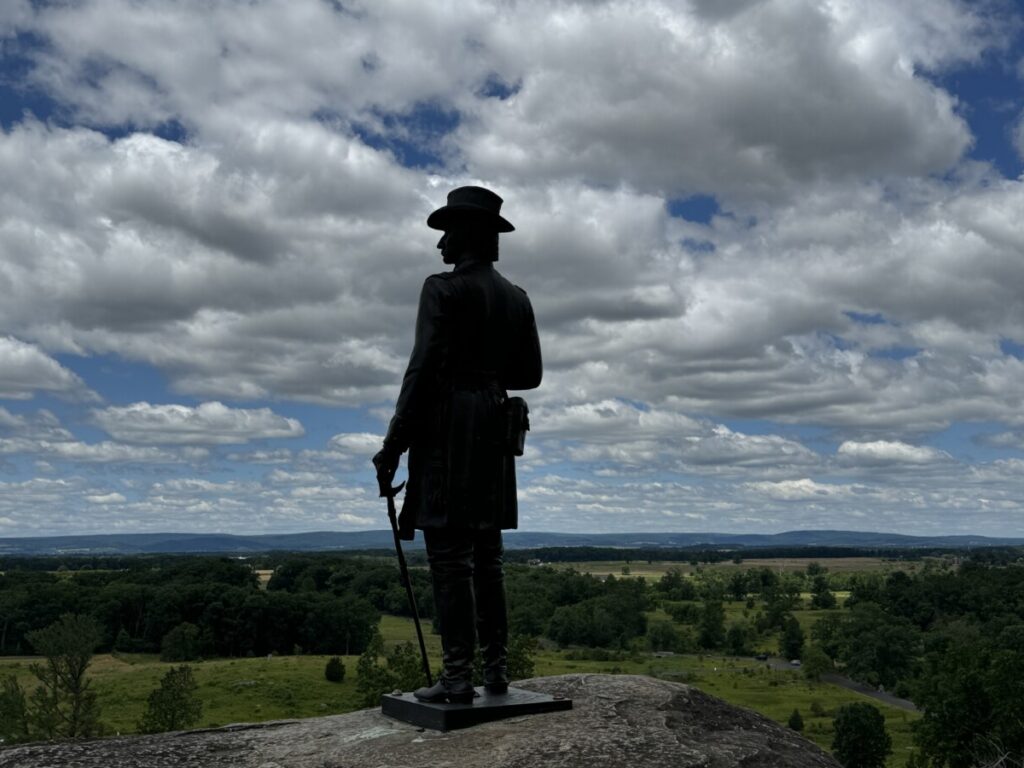
We were here for the 161st Anniversary of Gettysburg (July 1-3), and were rewarded with lots of special presentations and programs, reenactors and inpersonators, demonstrations and discussions.
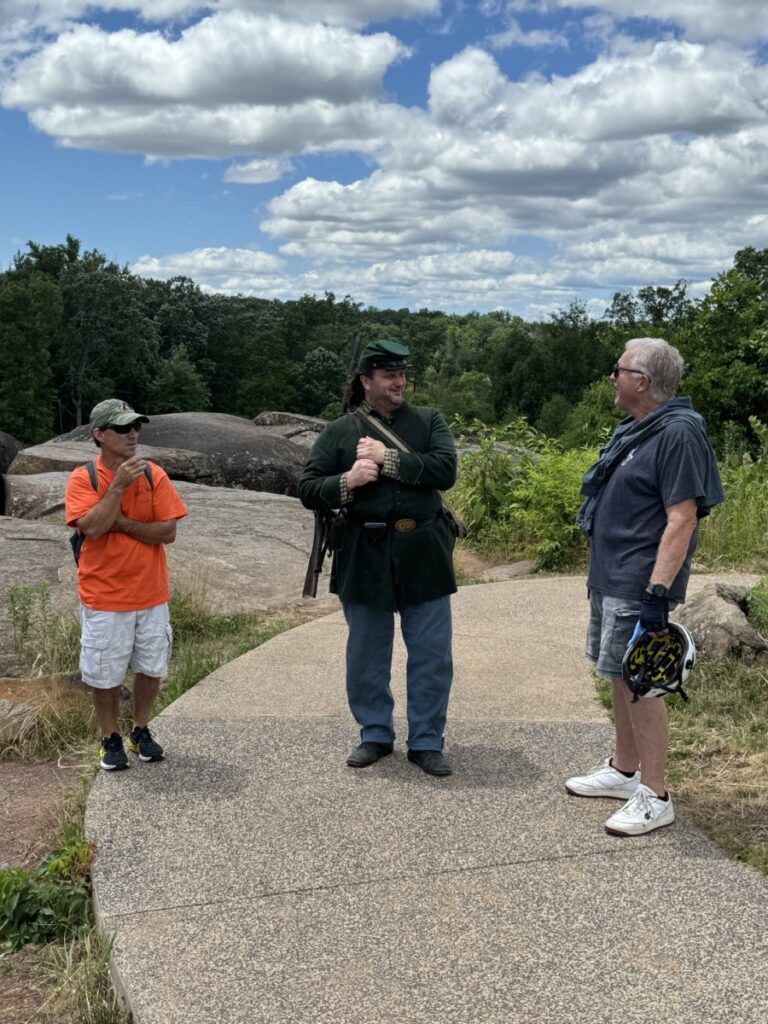
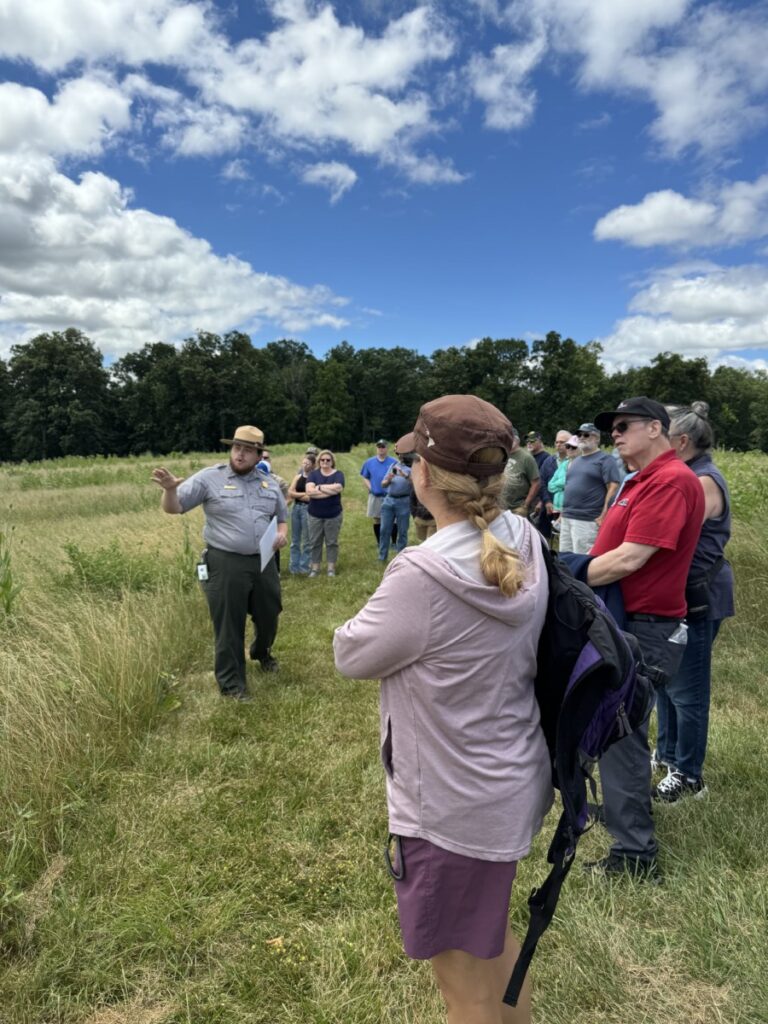
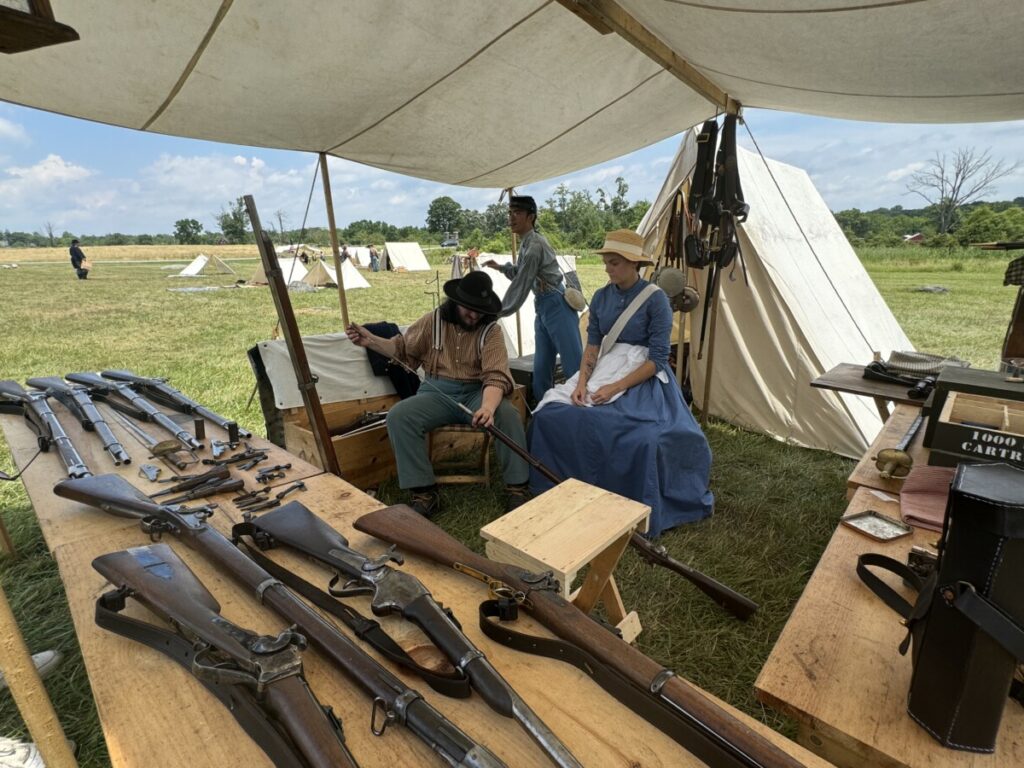
Roughly 11,000 died at Gettysburg alone, and other 40,000 were wounded, captured or missing — equaling 20 times the population of this small Pennsylvania town. Human and horse bodies were everywhere. Many were hastily buried wherever they fell, but they kept popping out of the ground after every good rainfall. Something had to be done.

That something was the Soldiers’ National Cemetery. A tiny fraction of Union soldiers were able to be unearthed and reinterred here, but many could not be identified and have only a number. Organized by state without regard to rank, a few actually have a name. Between Memorial Day and Labor Day, every evening, a short presentation precedes a musician performing taps, a moving experience to say the least.
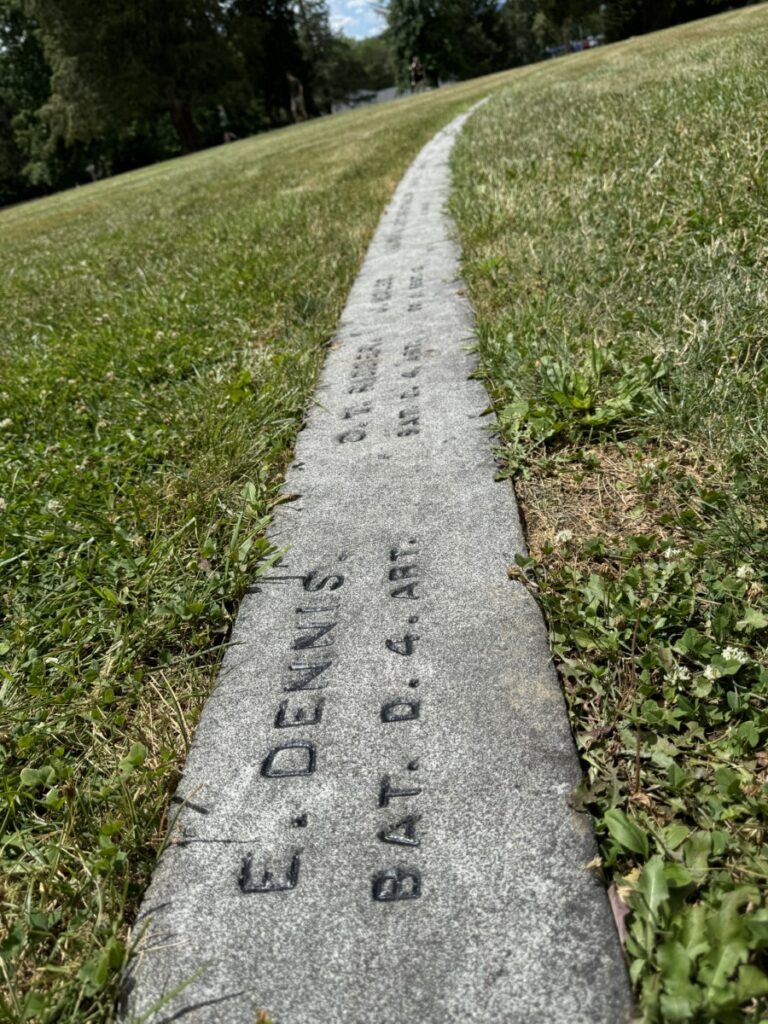
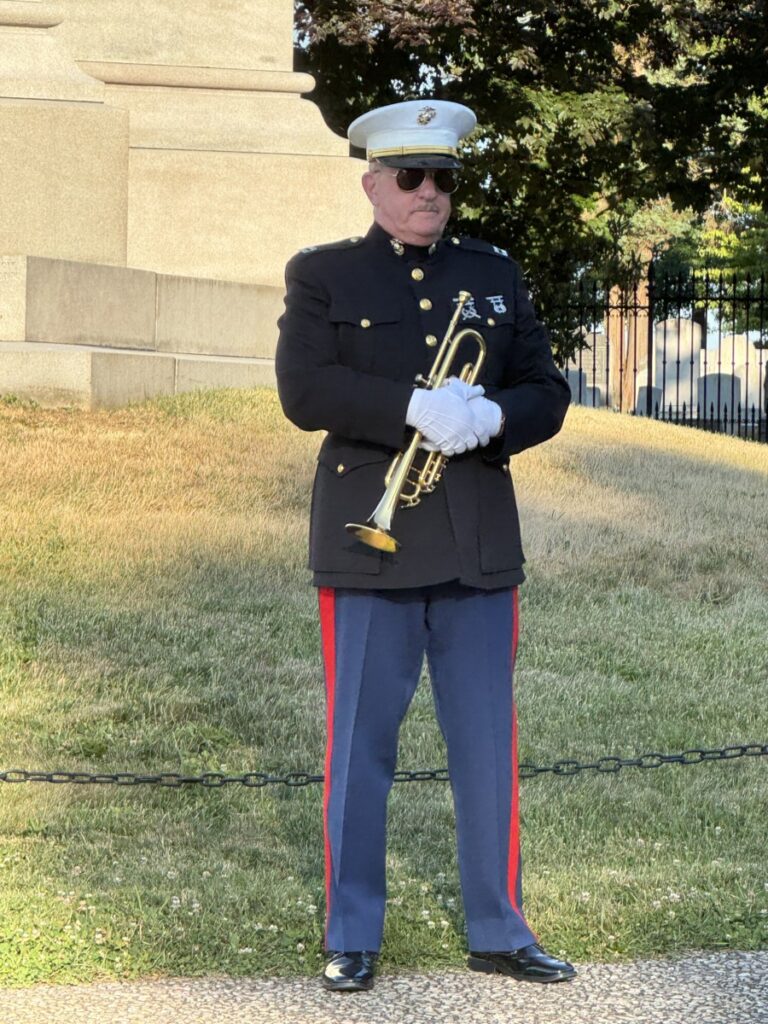
This cemetery is also the location where Abraham Lincoln delivered the Gettysburg Address to a crowd of 10,000. Lincoln was generally a blabbermouth, but this speech was only 272 (albeit very well-chosen) words, honoring the sacrifice of the fallen soldiers, and reframing the Civil War as a fight not just for liberty, but that all men should be treated equally.
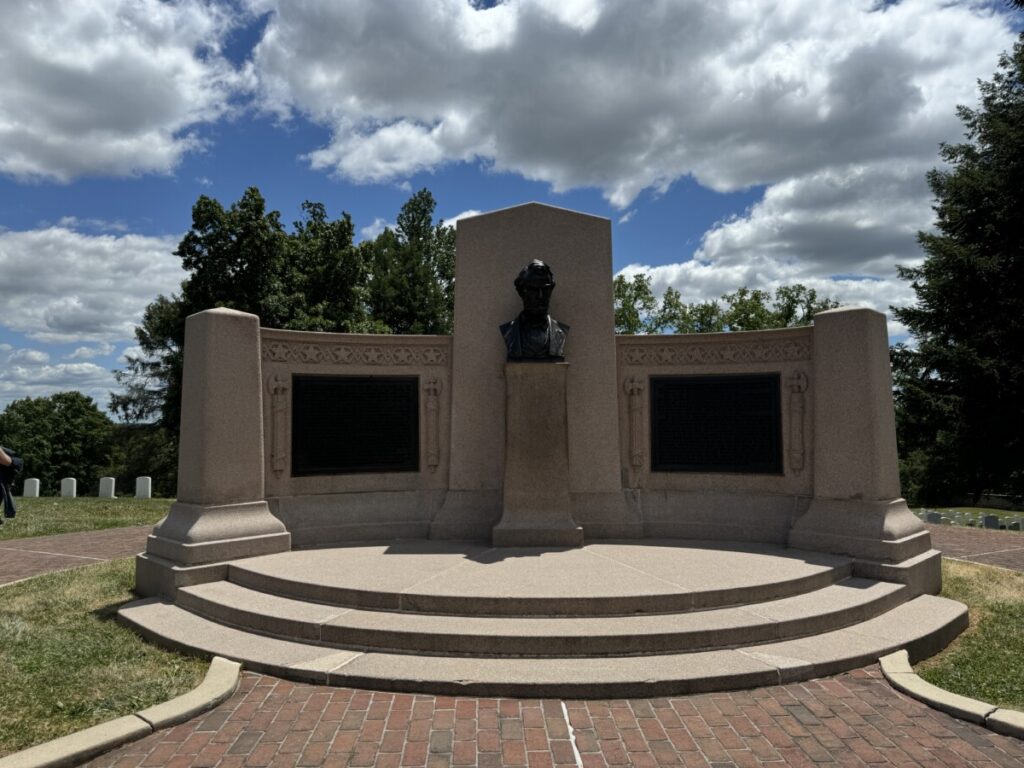
At the National Park Service visitor center, a unique feature called a “Cyclorama” depicts the battlefield. Basically, you stand in the middle of a round, 360-degree mural, while a voiceover and special light effects illuminate the seminal parts of the battle. Painted by a team of artists in 1882, the whole thing is longer than a football field and as tall as a four-story building.

We thought the voiceover part was annoying, but the painting was incredible, especially the way that real features (trees, rocks, props) were made to blend in, such that you could hardly tell where the real stuff ended and the painting began. Can you tell below? The front half of the rock circle is real, the back half is painted. The front limb of the tripod teepee is real, the back two are painted. The front bundle of twigs in real, the back bundle is painted. Isn’t that amazing?
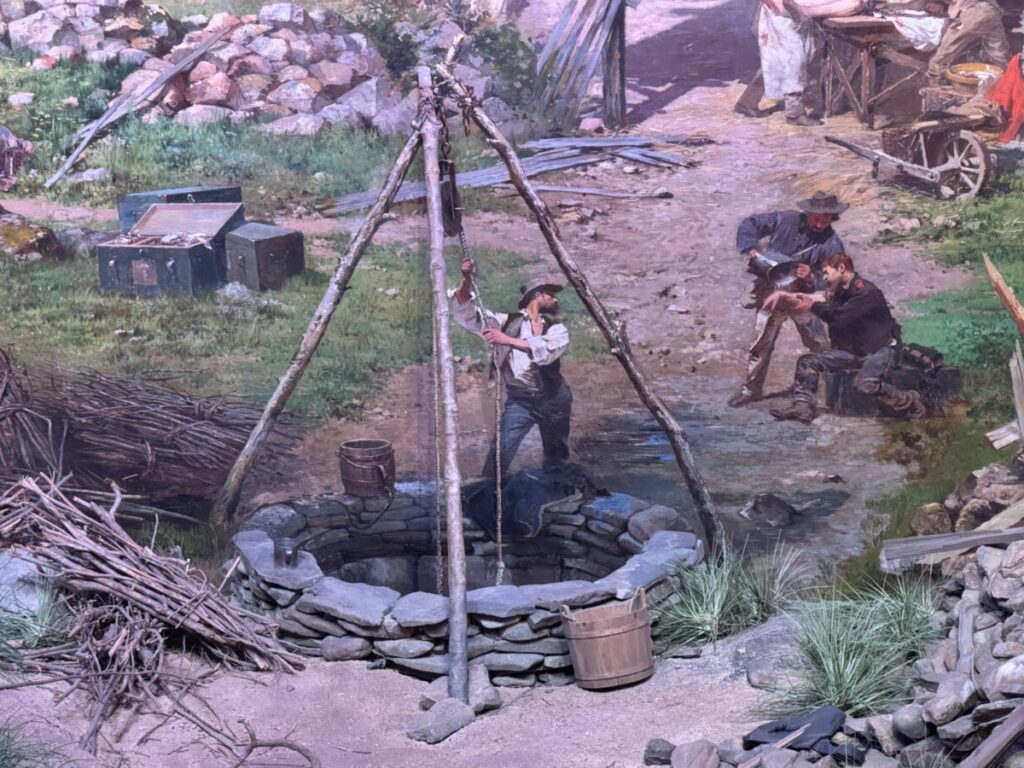
The town of Gettysburg suffered greatly, with 120,000 soldiers quickly overwelming the 8,000 residents of this tiny farm town. The Memories of the Battle walking tour illuminated a lot of the factors of war we had never really considered, and our costumed tour guide Patty was terrific. The majority of the town’s 250 buildings are original and many are still riddled with holes from the Gettysburg conflict.
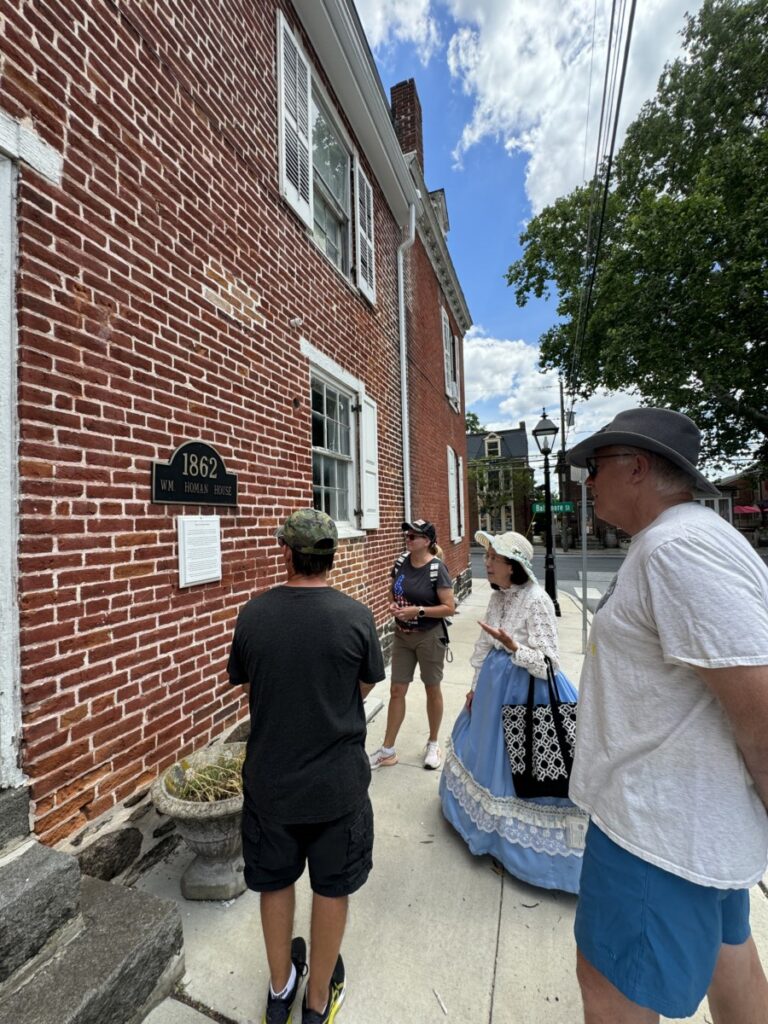
There are also many museums devoted to every aspect of the Civil War, including the David Wills House where Lincoln stayed and put the finishing touches on the Gettysburg Address. Of course, no marketing opportunity was left untouched, with capitalization on the battle, including the Lincoln Diner, Fourscore Brewery, Blue and Grey Bar and Grill … you get the drift.

Also worth a visit at Gettysburg is the Eisenhower Farm National Historic Site, where Dwight and Mamie escaped the stress of being the 34th President and hosted many shindigs for world leaders.
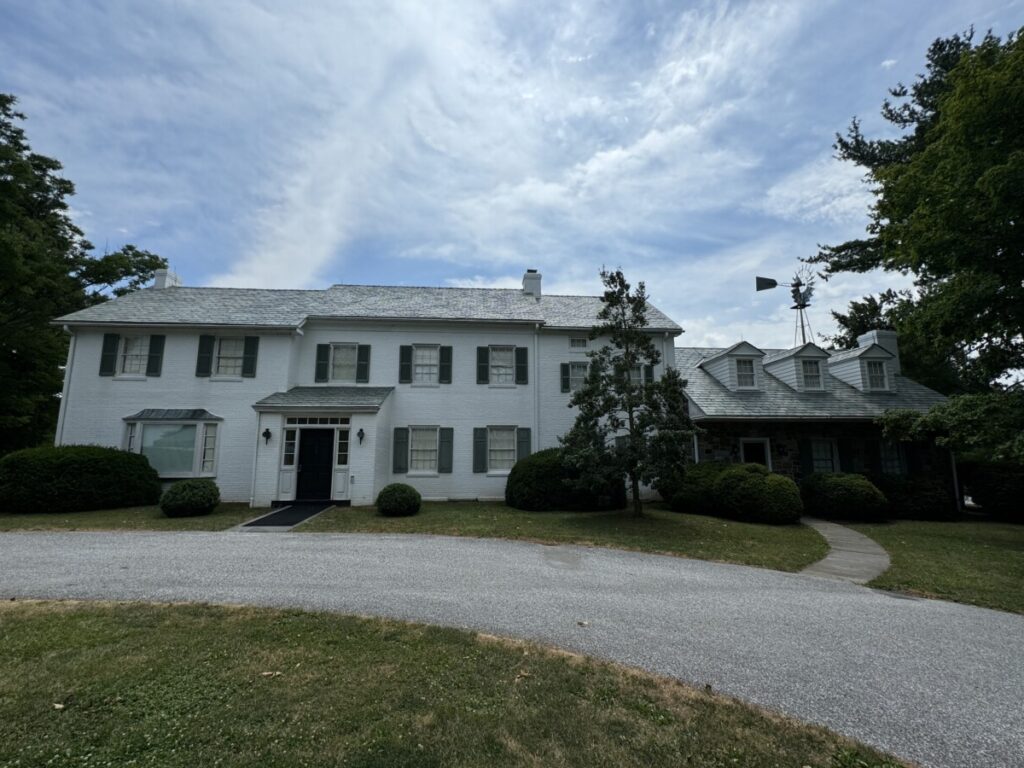

She had only two rules: don’t slide down the bannisters, and don’t touch her custom wallpaper, adorned with the state seals of 49 of the 50 states. Can you guess which state was left out?
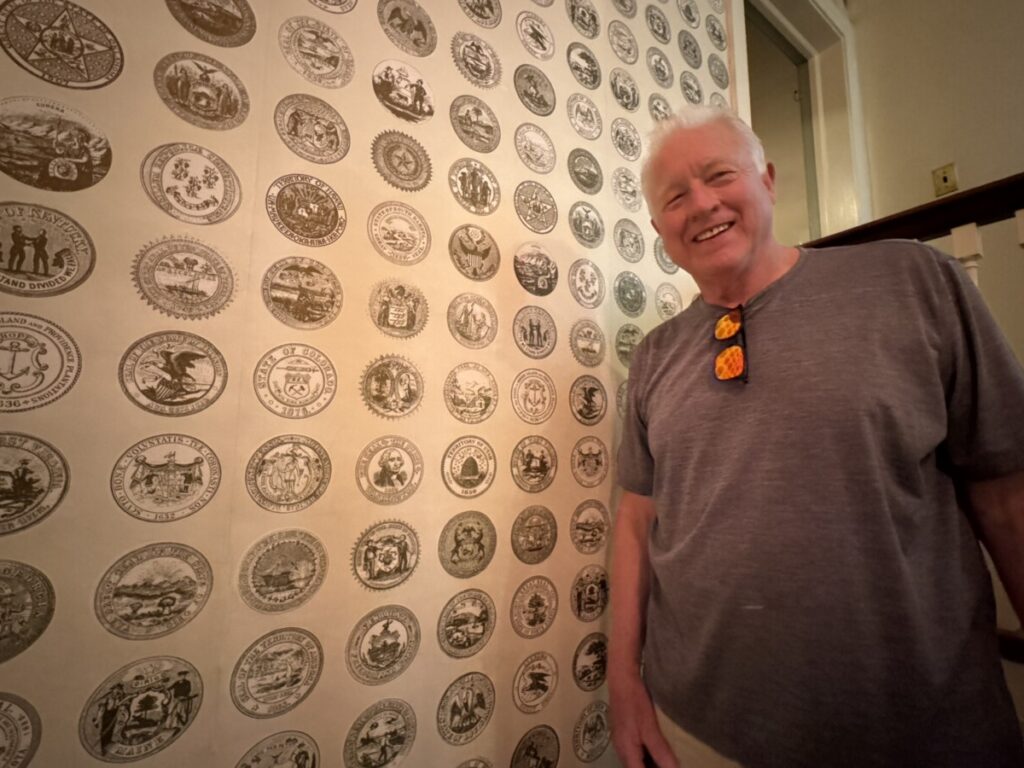
Antietam
The bloodiest one-day battle of the American Civil War (Sept. 17, 1862)
Antietam National Battlefield, Sharpsburg, MD. The bad: it was the bloodiest 24 hours in the war. The good: it was the catalyst that led President Lincoln to issue the Emancipation Proclamation to end slavery in America. The pronunciation: not “An-tee-a-tam” as it might seem, but rather “An-tee-tum.”
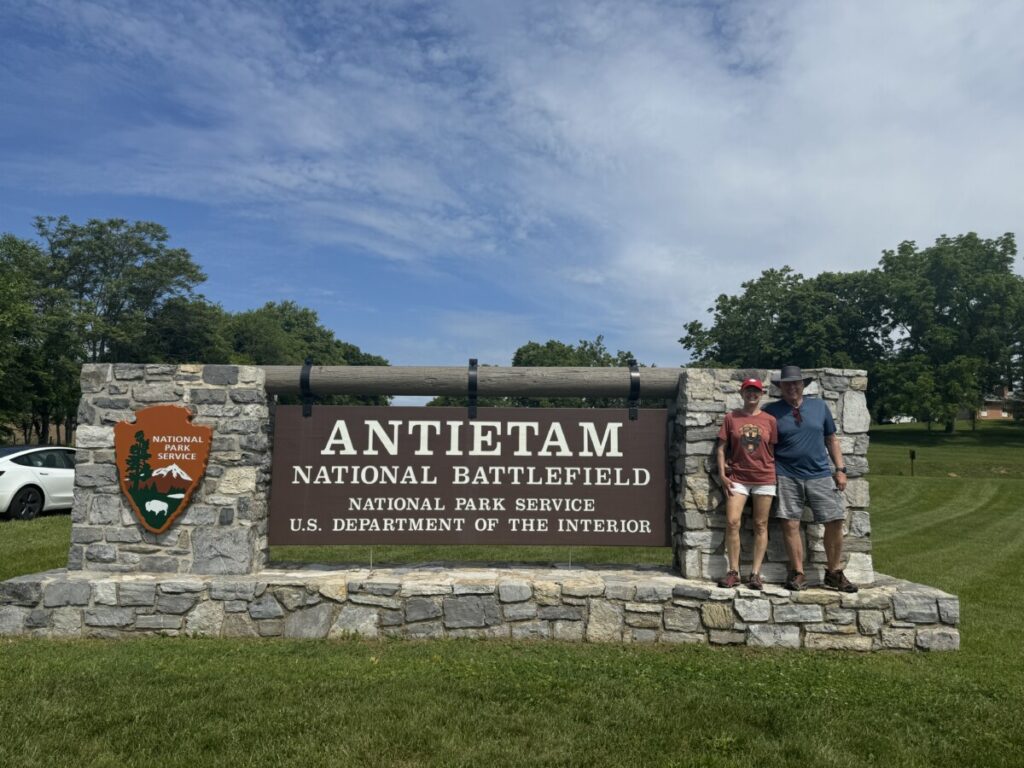
The outcome: after a 12-hour battle, 23,000 of the nearly 100,000 soldiers engaged in battle were either killed, wounded, or missing, with the lines of battle hardly shifted.
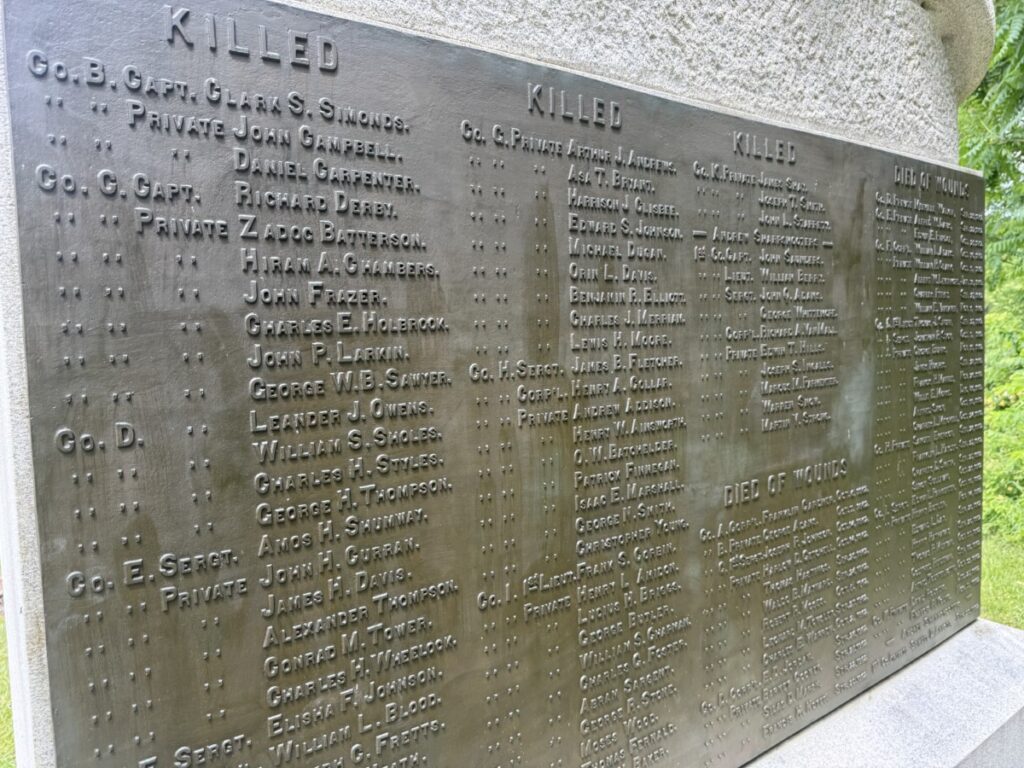
Like at Gettysburg, a self-guided tour route (approximately 8 miles) takes visitors to the pivotal locations of the clashes, using a GPS-enabled audio tour guide. There are also hiking trails through the woods which bring you even closer to the sites. Antietam was decidedly less crowded than Gettysburg, but no less interesting.
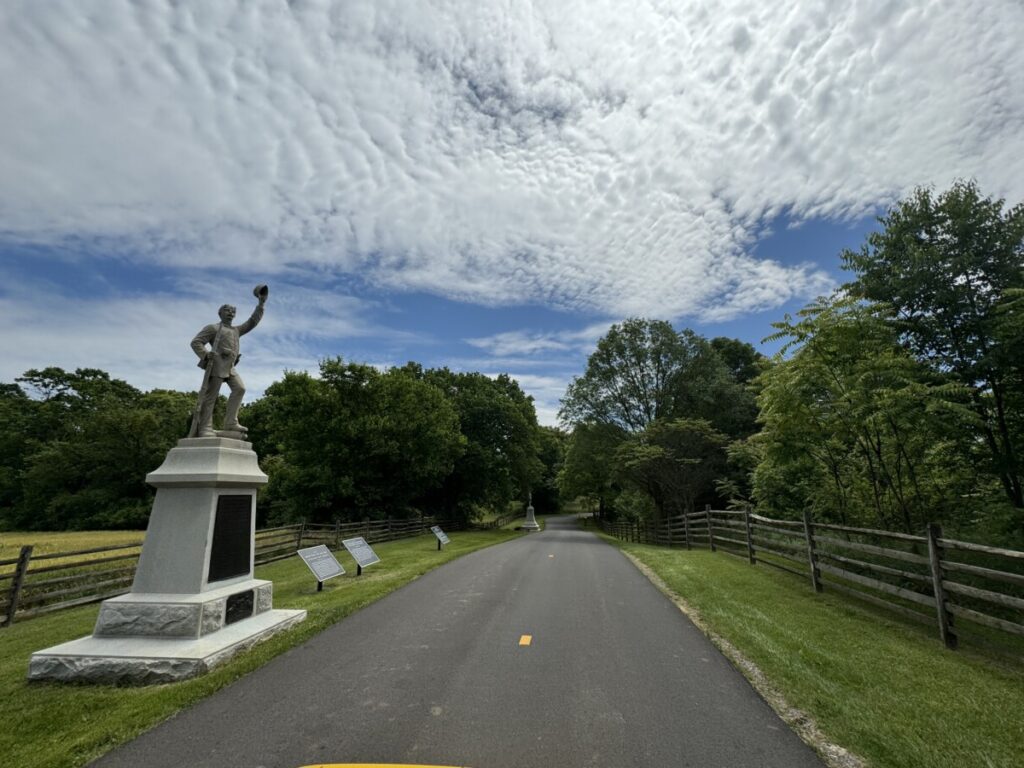
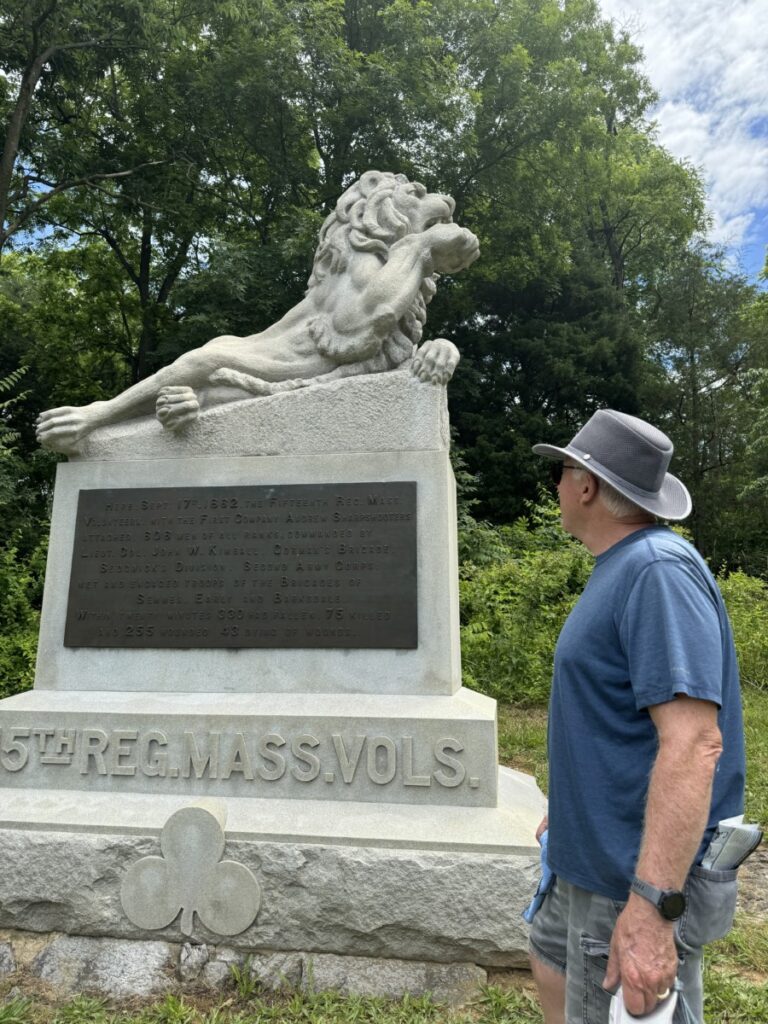
Also like at Gettysburg, the countryside is studded with monuments to the regiments on both sides, with some small and simple, others huge and ornate. The federal government did not pay for these monuments; rather, it was the states whose soldiers are being remembered, who footed the bills.
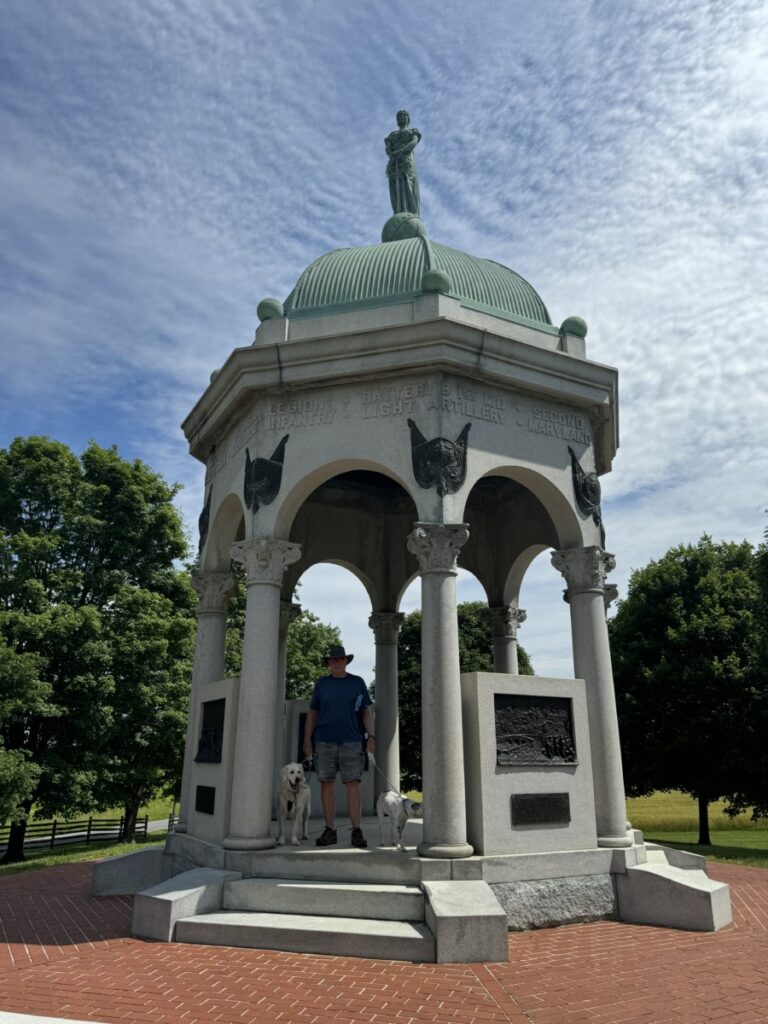


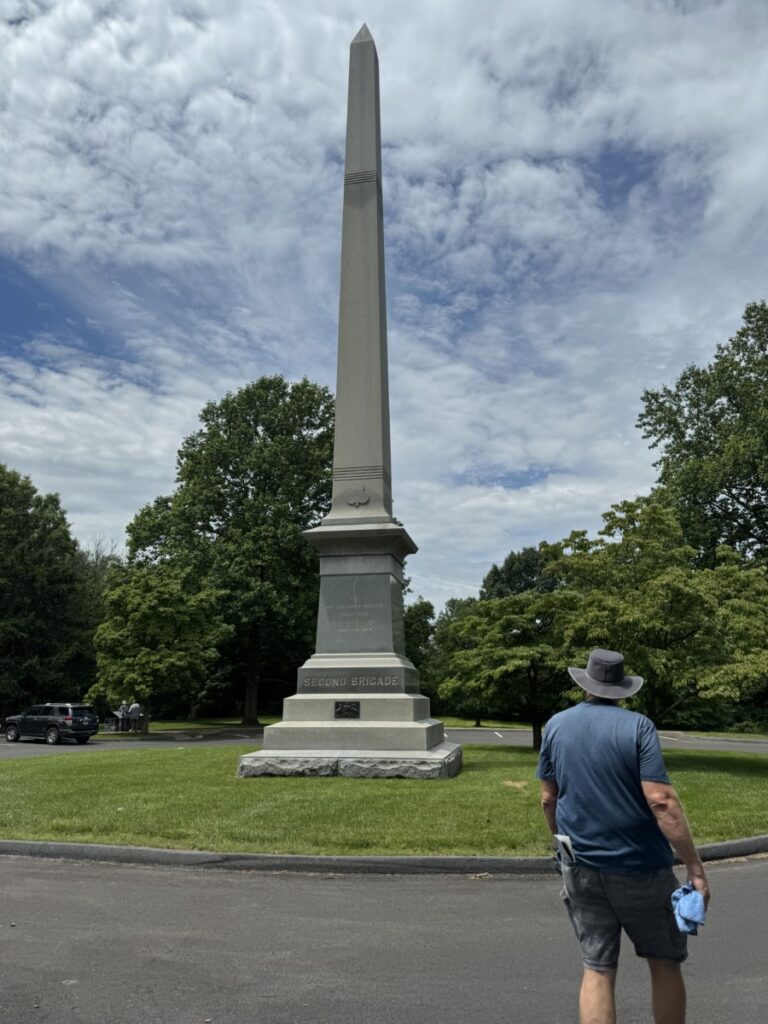
The famous Dunker Church, where the first skirmish occurred, was a simple worship site that became a focal point during the battle, with both sides coveting its higher ground. It been restored and represents how a small, simple farm town becomes overrun against its will during times of war.

The “Sunken Road” was everafter called “Bloody Lane” after more than 5,000 soldiers died in this gulley, which can be even better viewed by climbing a commemorative tower at the far end. Imagine this ditch overflowing with piles upon piles of dead humans and horses, and you’ll understand the moniker.

Burnside Bridge is where a small group of soldiers from Georgia held off a large Union force for hours, by generally picking off waves of soldiers, one by one, from their location high on a nearby hill. Eventually, however, enough soldiers crossed that Confederate General Robert E. Lee was finally forced to withdraw. Such are the tides of these battles — it’s not over, until it’s over.
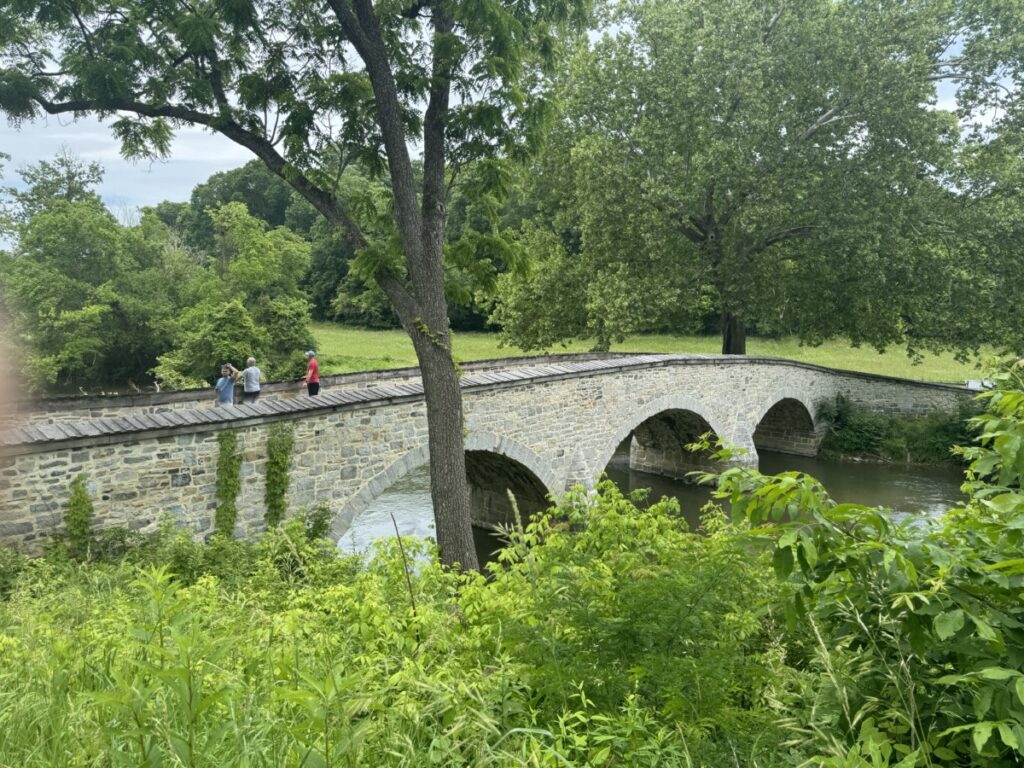
The Antietam National Cemetery is a particularly stunning final resting place for many of the Union dead. Though the surrounding lands have been returned to quiet, serene farmfields, the tally of dead Americans in a single day is absolutely horrific — in this battle, like so many others during the Civil War, the sickening consequences of our divided nation.
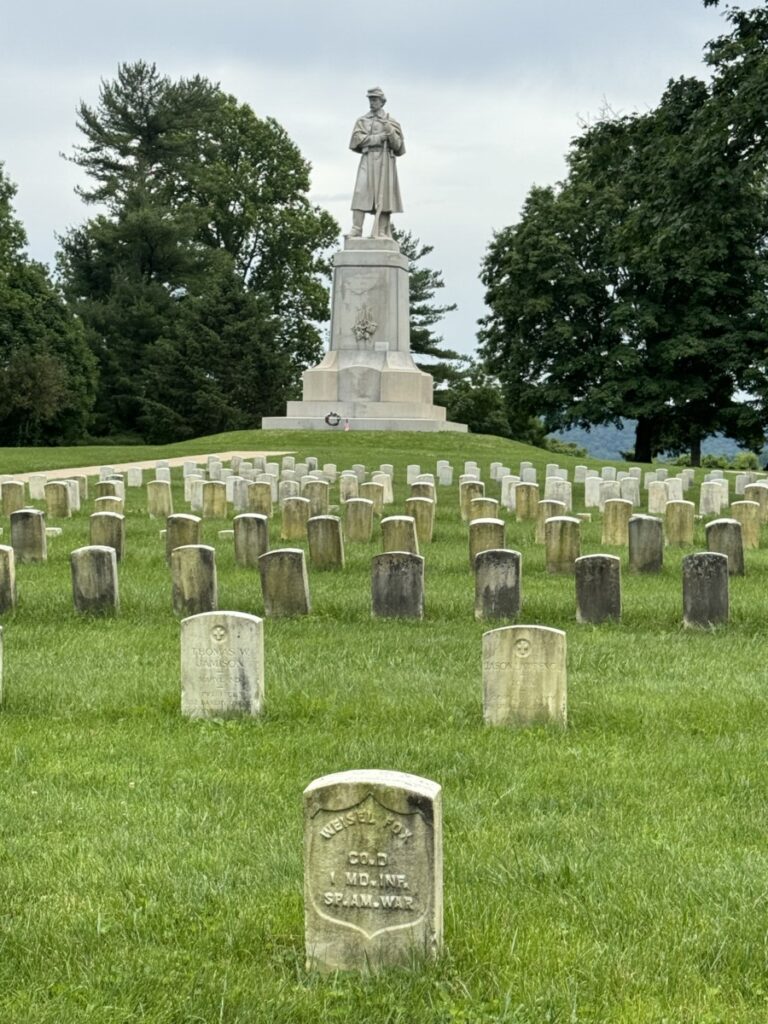
Harpers Ferry
The turning point of the Maryland Campaign (Sept. 13-15, 1862)
A few days before Antietam, General Lee was in the nearby town of Harpers Ferry, MD, leading his army into the North for the first time since the Civil War began, a bold move called the “Maryland Campaign.” Lee felt this small town was a strategic location as the line of communications and supplies, but first he had to battle his way through the Union troops stationed here with the exact same thoughts. Lee sent the famous General “Stonewall” Jackson to surround Harpers Ferry, resulting in three Civil War battles occuring here.
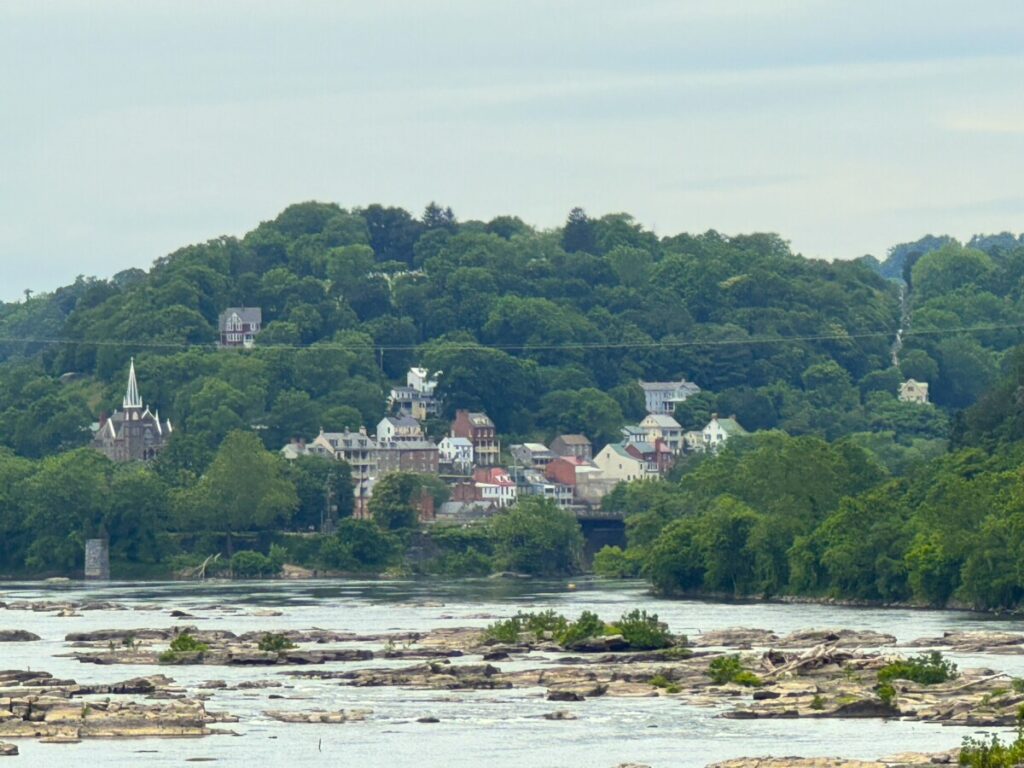
Even our KOA Campground was set on a Civil War battlefield at the Murphy Farm; here on its sloping fields, the Confederates forced the surrender of 12,000 Union troops and ended Jackson’s siege of Harpers Ferry. Interpretive signs were sprinkled throughout the campground, meaning we could enhance our Civil War education on the way to pick up some ice cream at the general store.
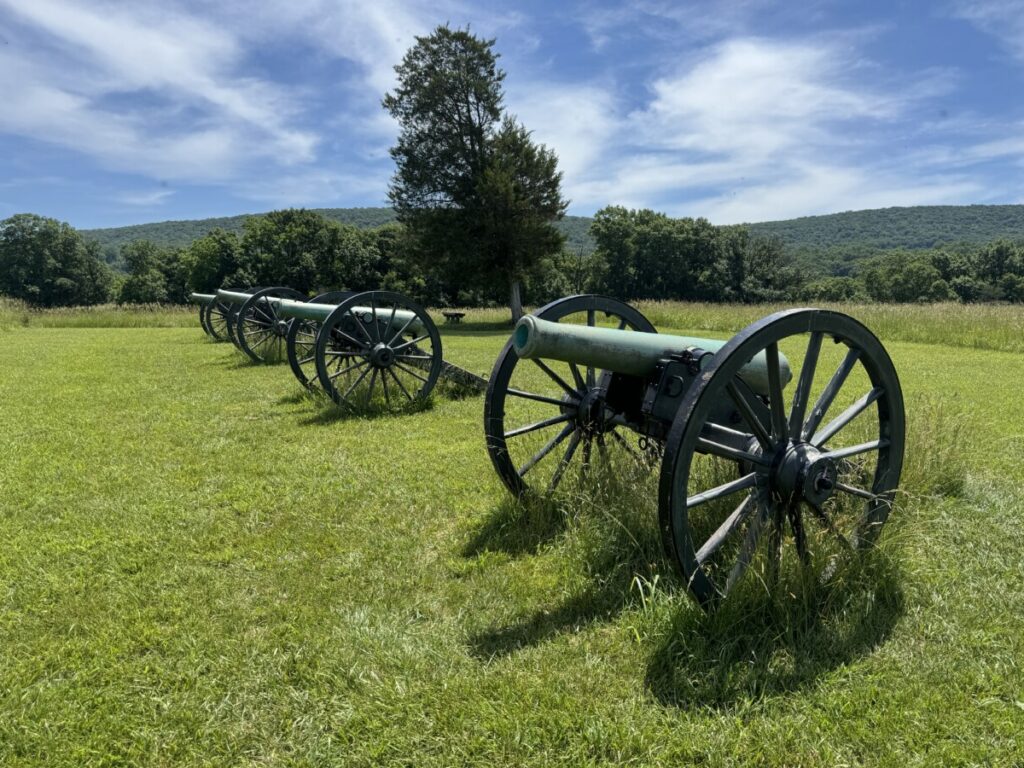
Harpers Ferry is where the Shenandoah and Potomac Rivers come together and continue their way to the Chesapeake Bay. From “The Point,” visitors can marvel at the landscape and see three different states — Virginia, Maryland, and West Virginia, and two rivers below. It’s also the “halfway point” between Georgia and Maine for the famous hiking route, the Appalachian Trail.
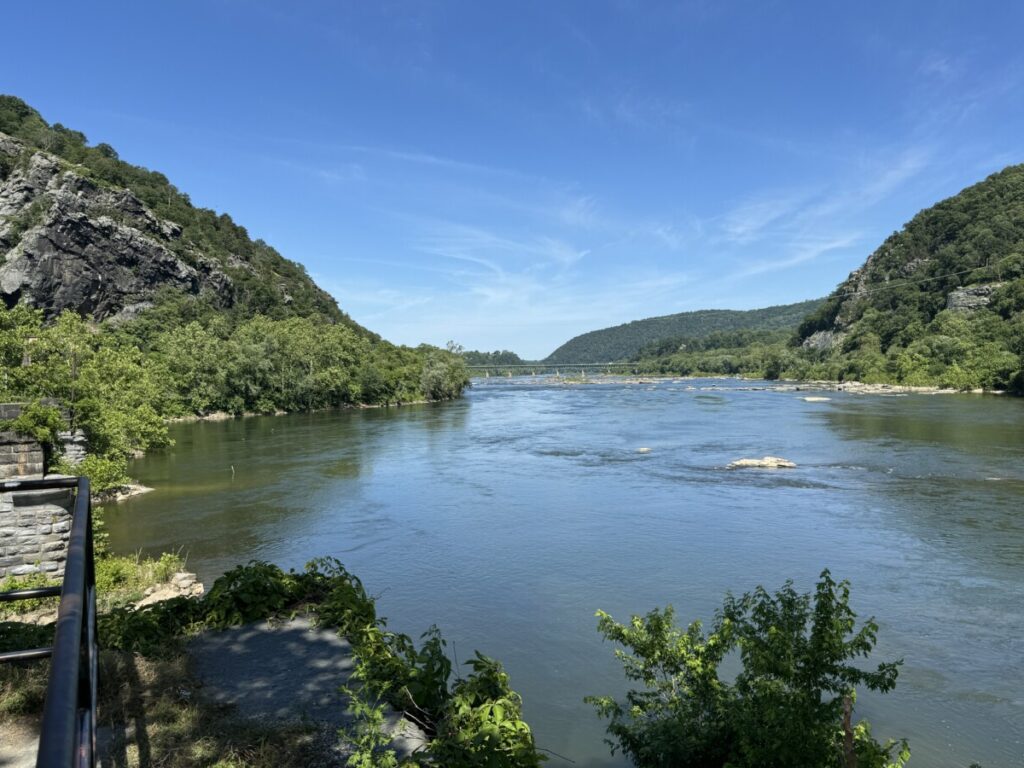
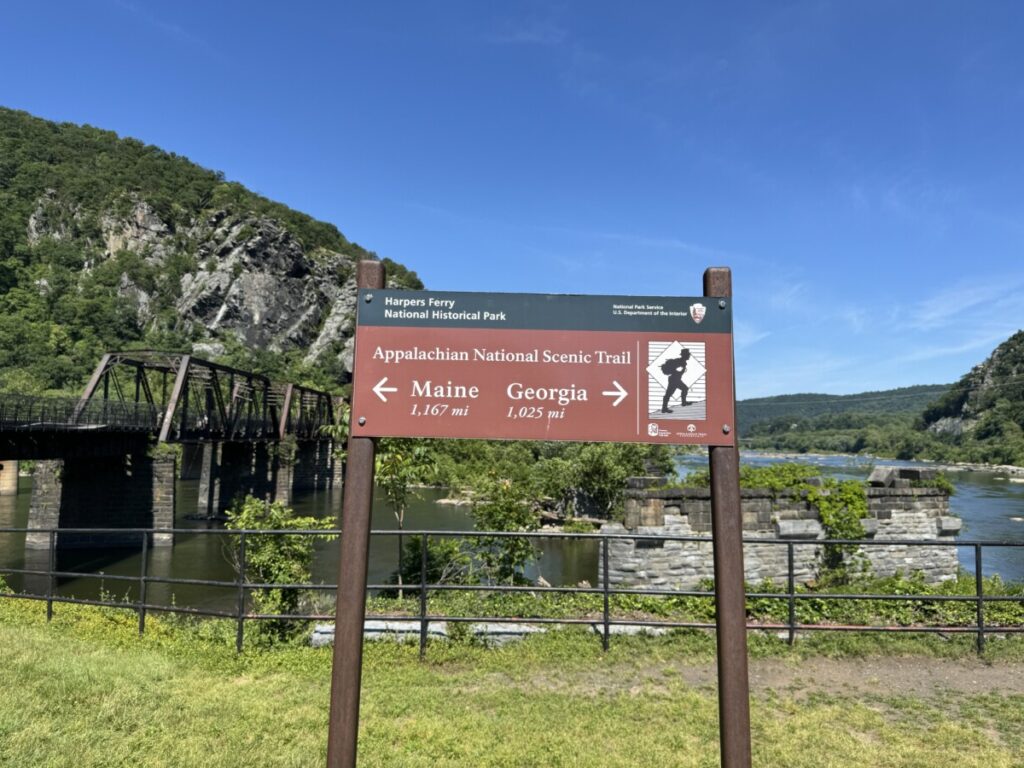
When Thomas Jefferson visited in 1783 he called this small town “perhaps one of the most stupendous scenes in nature.” The entire town is now a National Historic Park managed by the National Park Service, with 100 or more Victorian- style buildings dating back to the late 19th and early 20th centuries.
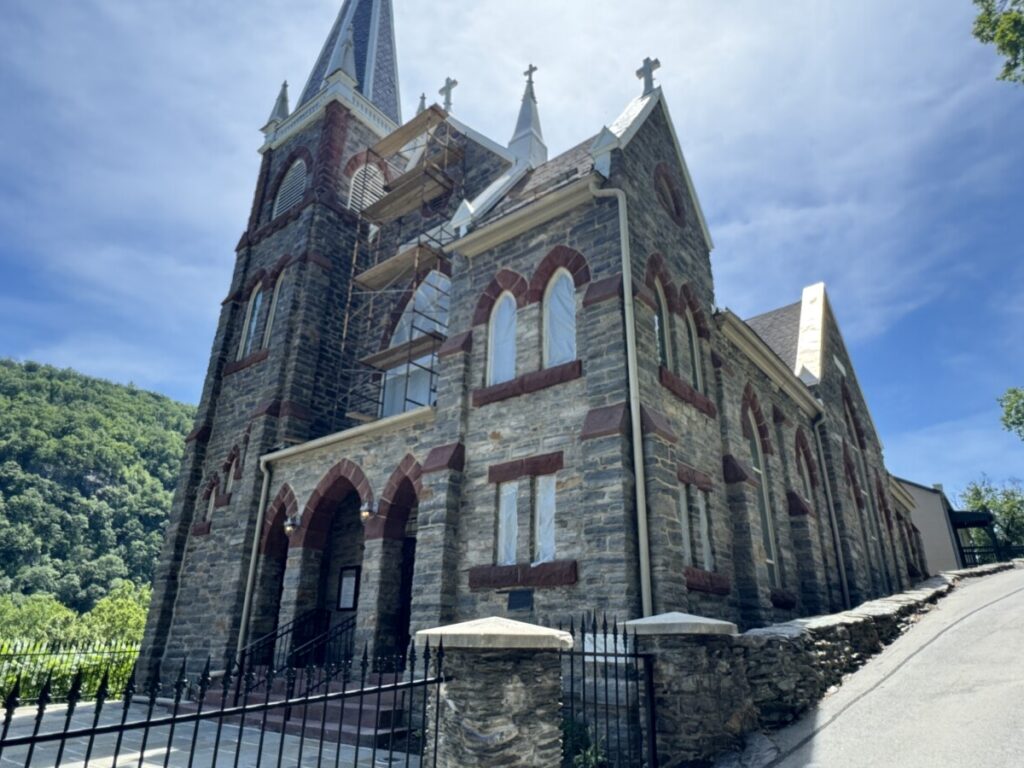
Many of the buildings have been restored to a 19th-century industrial village and converted to fascinating mini-museums and historical exhibits.

To visit the town of Harpers Ferry, grab a seat on the free shuttle from the Visitor Center down the road, because parking in this tiny town on a tiny point is extremely limited. Also, bring your walking shoes, because the entire town is set on a hilly mountainside with steep stone steps leading you up and down the various levels of town.
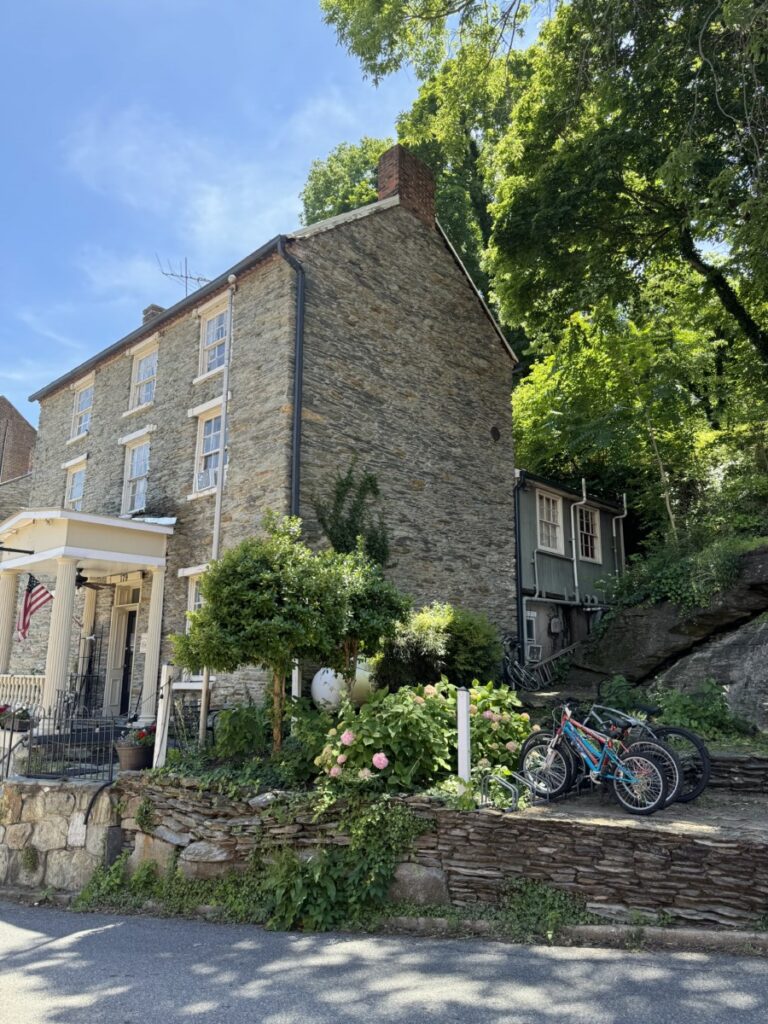

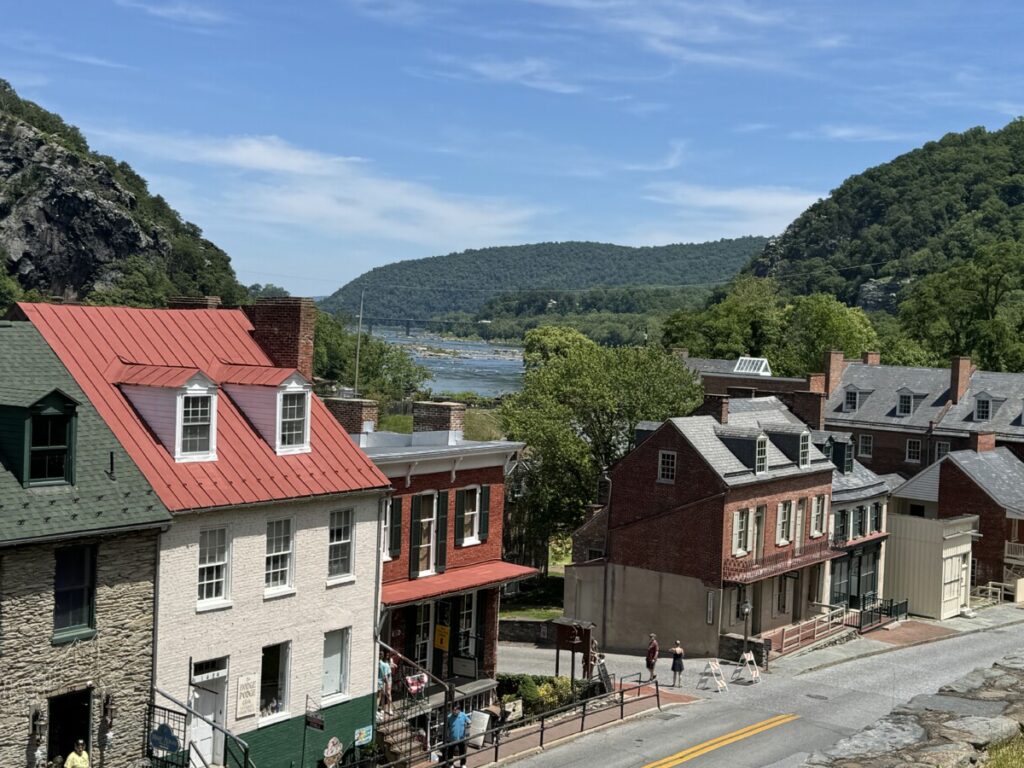
Harpers Ferry is also known as the location of John Brown’s raid. Here in 1859, the wildly anti-slavery, “was-he-a-genius-or-was-he-insane,” John Brown initiated a group attempt to orchestrate a slave revolt. Capturing and holding a Harpers Ferry armory for 36 hours, they eventually escaped to this fire engine house, where Brown was eventually captured, later being hanged for murder, treason, and inciting a slave insurrection. Though he was a zealot, he was a zealot with good ideas, whose path and ideals Abraham Lincoln would follow just a few years later.
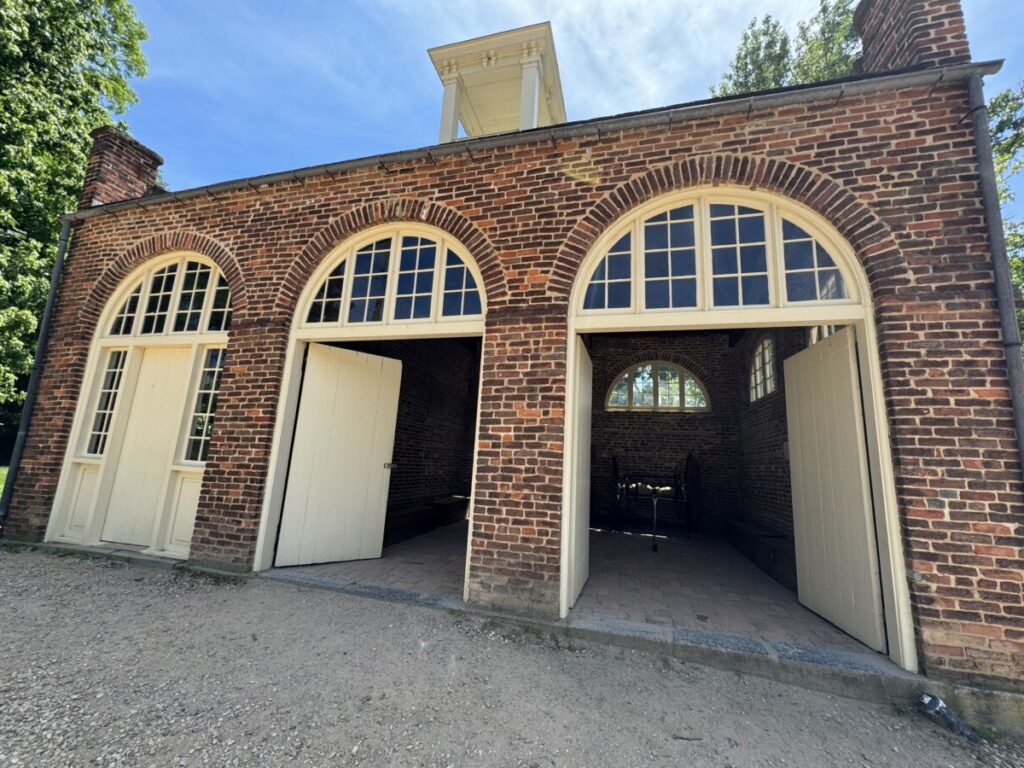
Lewis and Clark began their western expedition from the town, and Mark Twain also stayed here. The first train crossed the Potomac here, and you, too, can cross it via a pedestrian foot bridge. On the other side, the Chesapeake and Ohio National Historic Canal Towpath is a dirt and stone path that runs 184.5 miles between Washington, DC and Cumberland, MD. It was originally built for the canal mules to walk beside the canal as they “towed” the canal boats through the waterway.
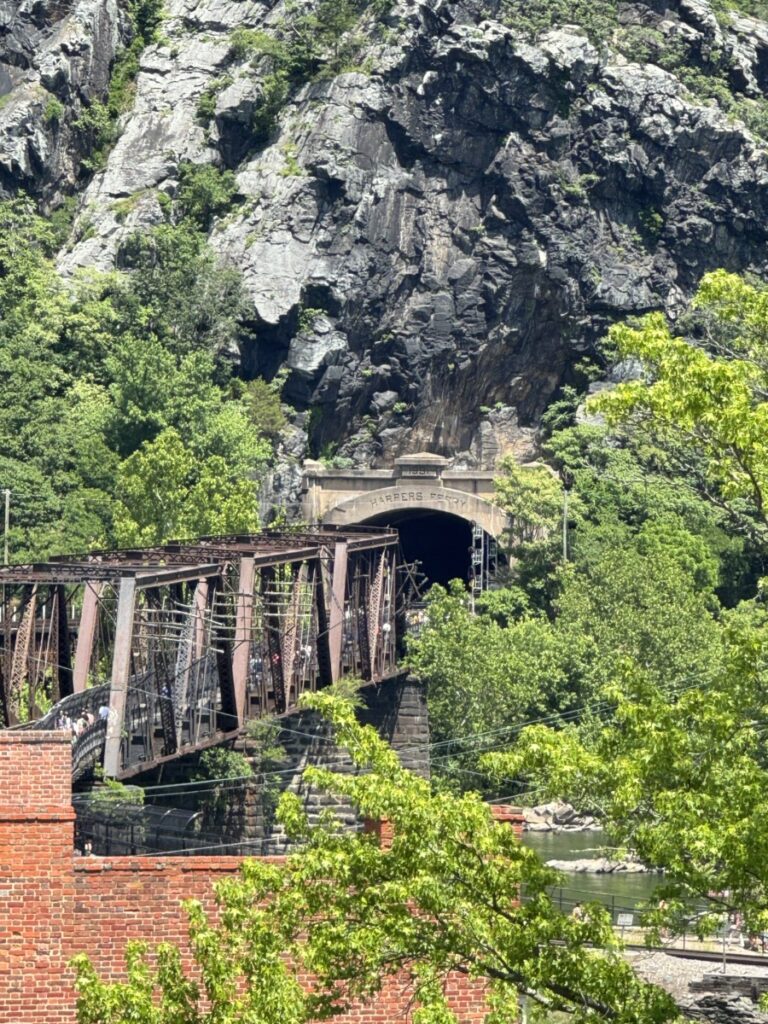
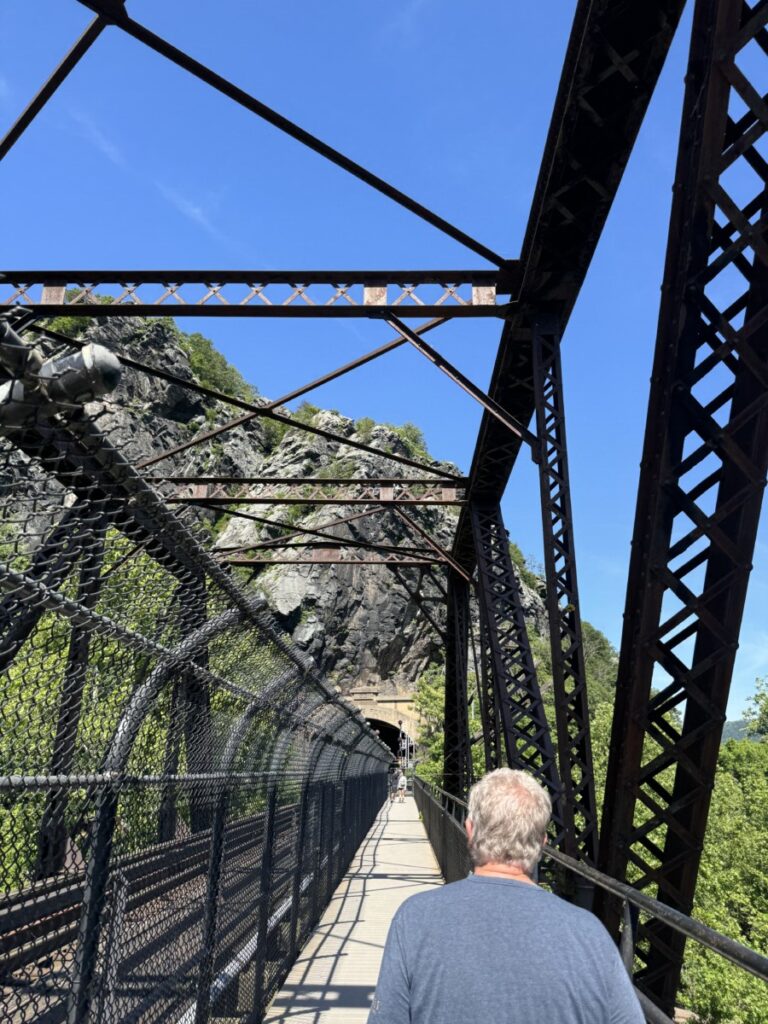
Harpers Ferry is such a cool town, they even offer day care! Just kidding. No children were harmed in the making of Harpers Ferry.
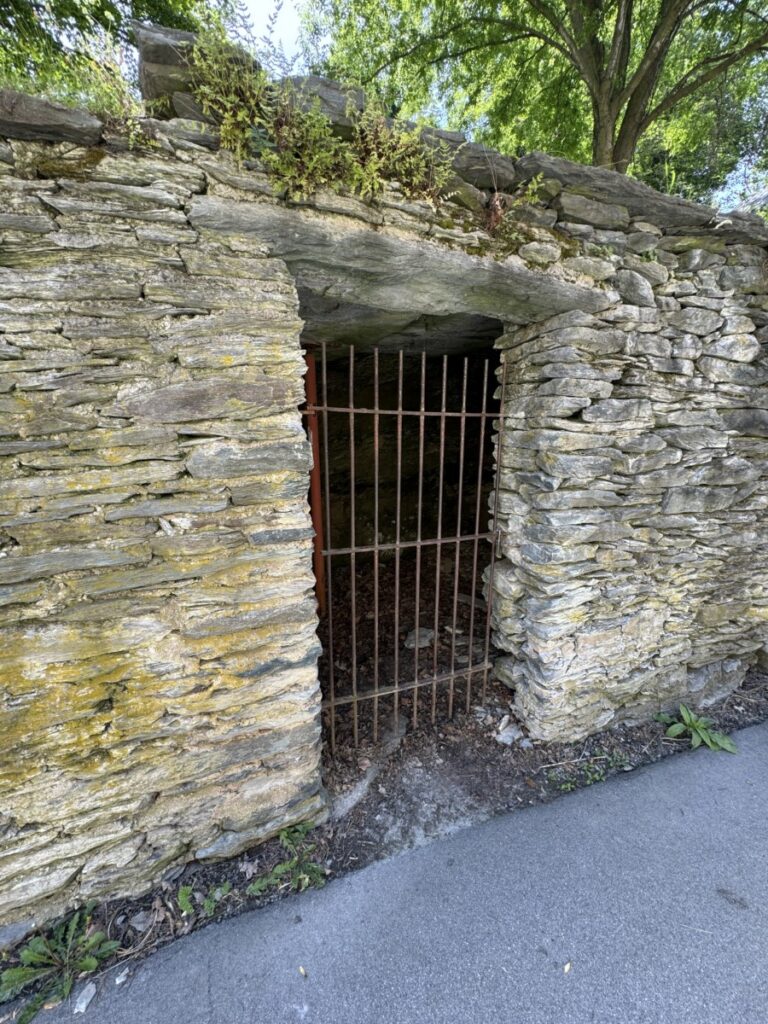
~~~~~~~~~~~~~~~~~~~~~~~~~~~~~~~~~~~~~~~~~~~~~~
And thus concludes our teeny-tiny summary of an itty-bitty bit of Civil War history. Regardless of the outcome of this or that skirmish or battle, or indeed the entire Civil War, the valor and bravery of those who fought cannot be denied. Some 720,000 soliders died in the War, about 2% of the population; a loss on the same scale today would equal 7 million deaths. Whether you choose to skim the surface OR take a deep dive into history, every American should visit at least one Civil War battlefield!
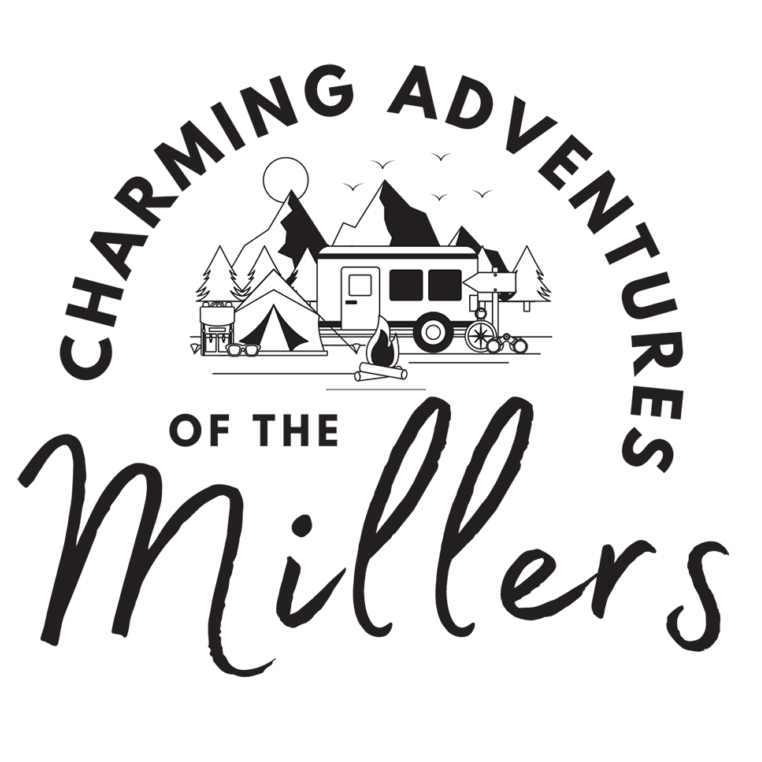
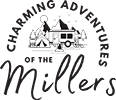
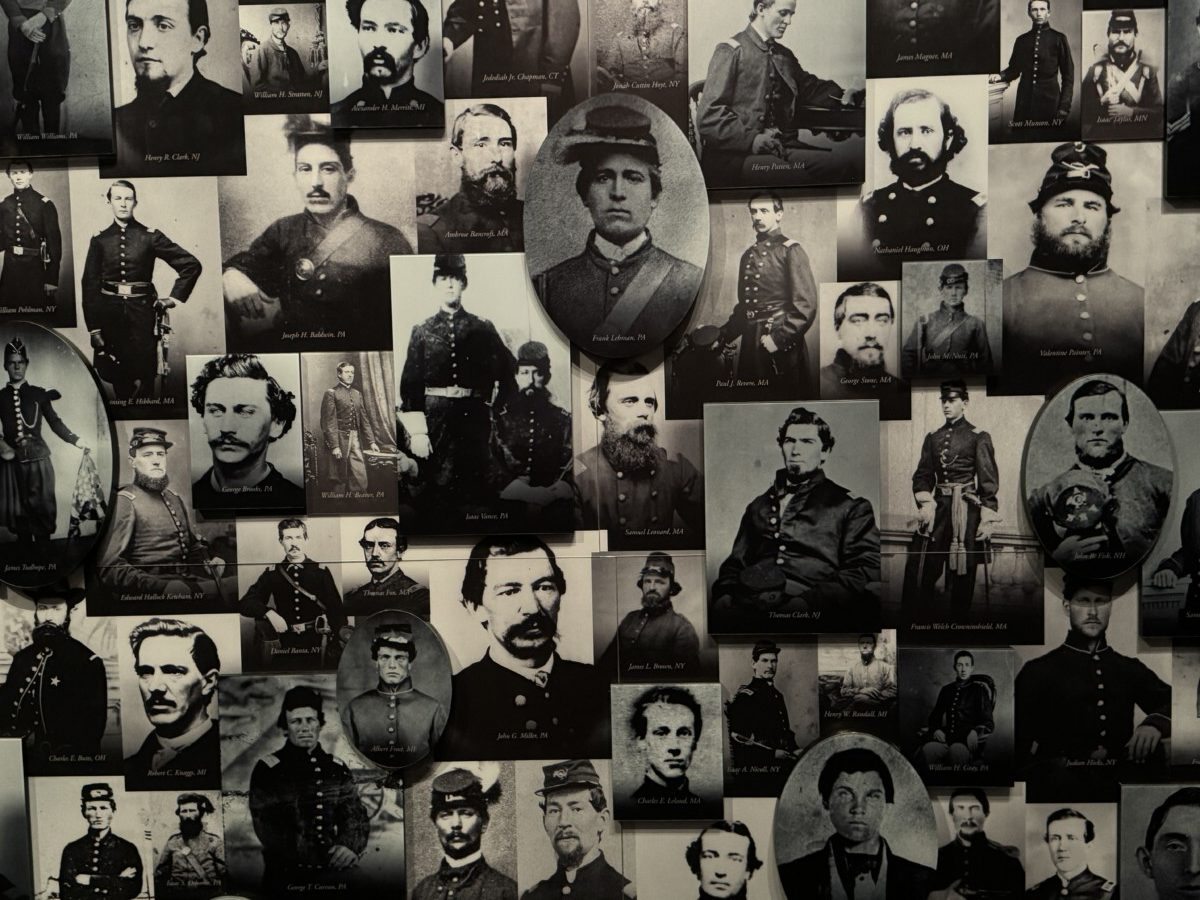
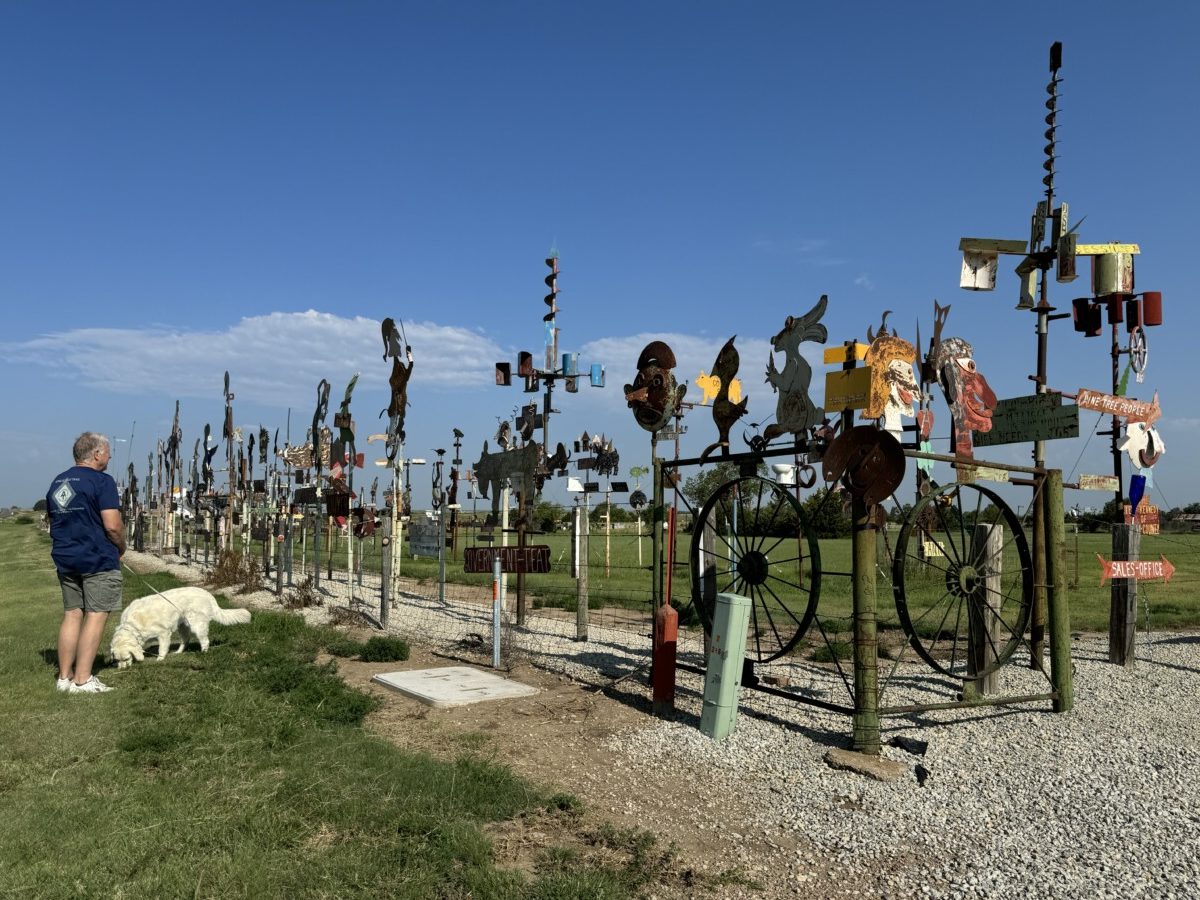


Incredible narrative of the Civil War battles and history!!!!!! If you ever become bored with doing the trillion things you do, please consider writing a novel!
Excellent post, Tessa! These stops on your journey must have been both moving and poignant – maybe even difficult at times – but you captured their essence well. Appreciate the education. Nicely done!
An amazing history lesson. I felt like I was right there with you (and wished that I had been)!